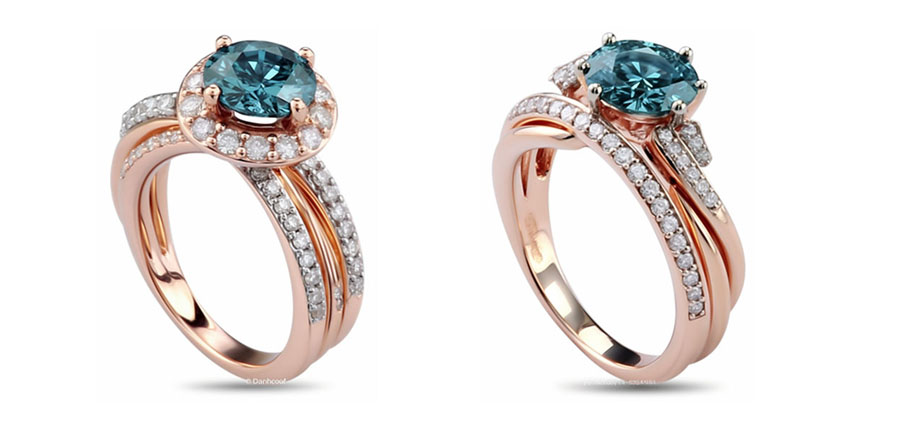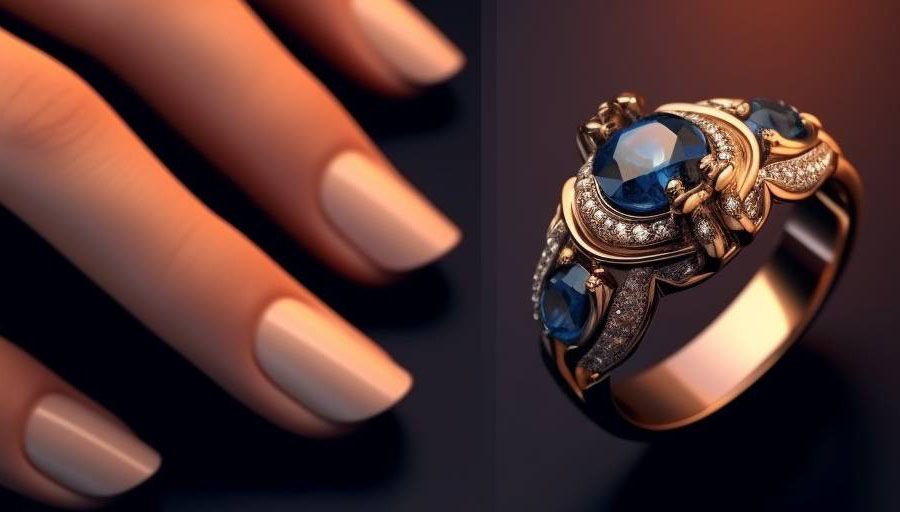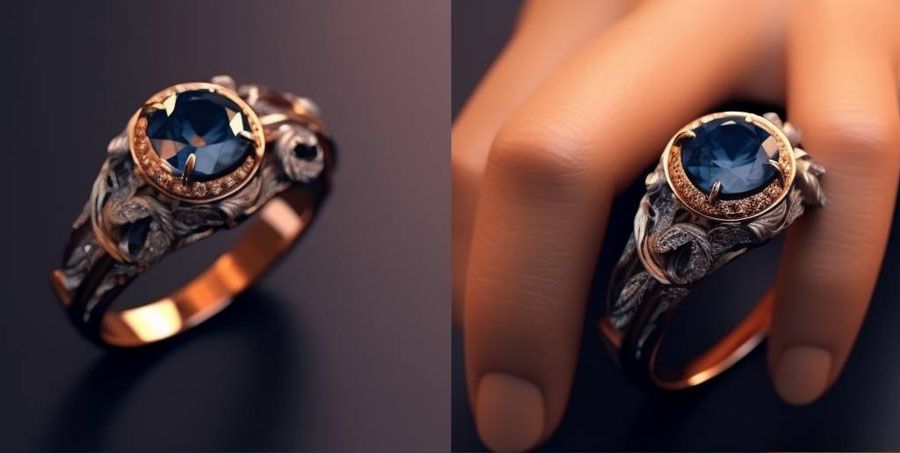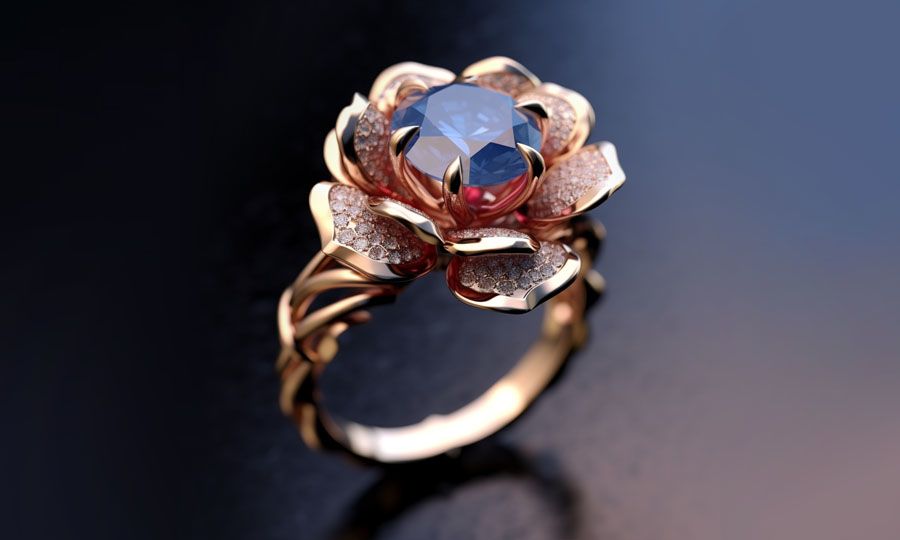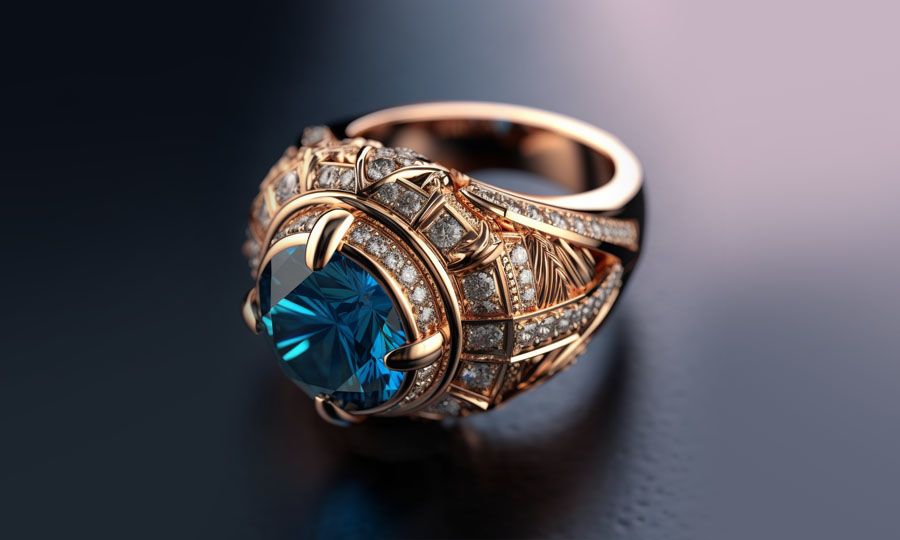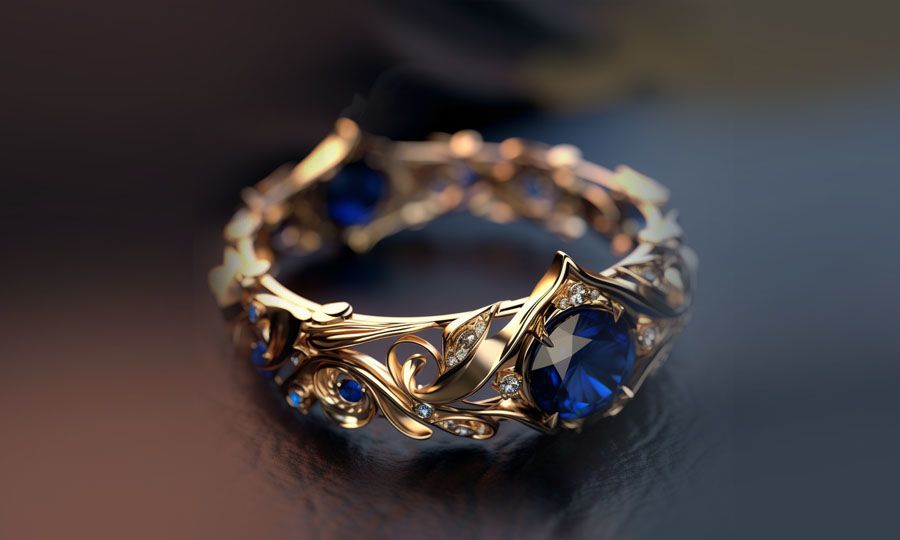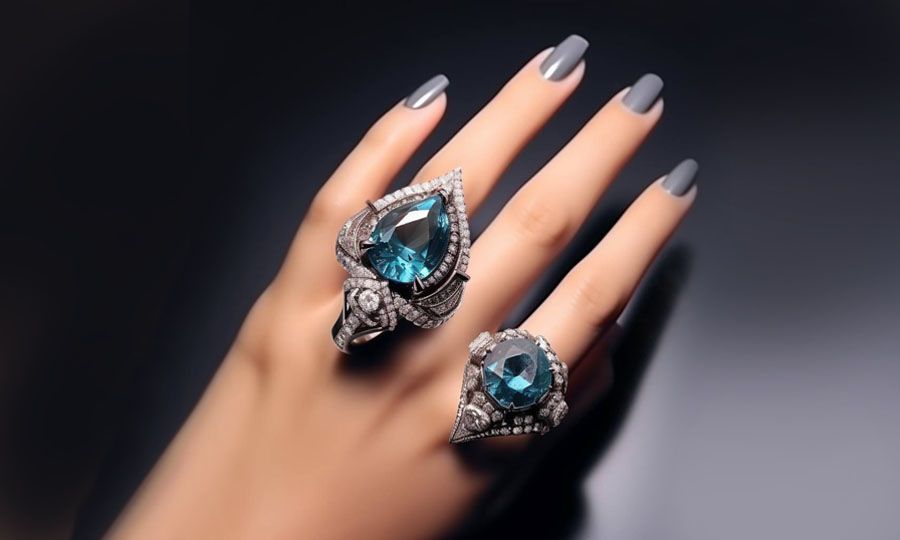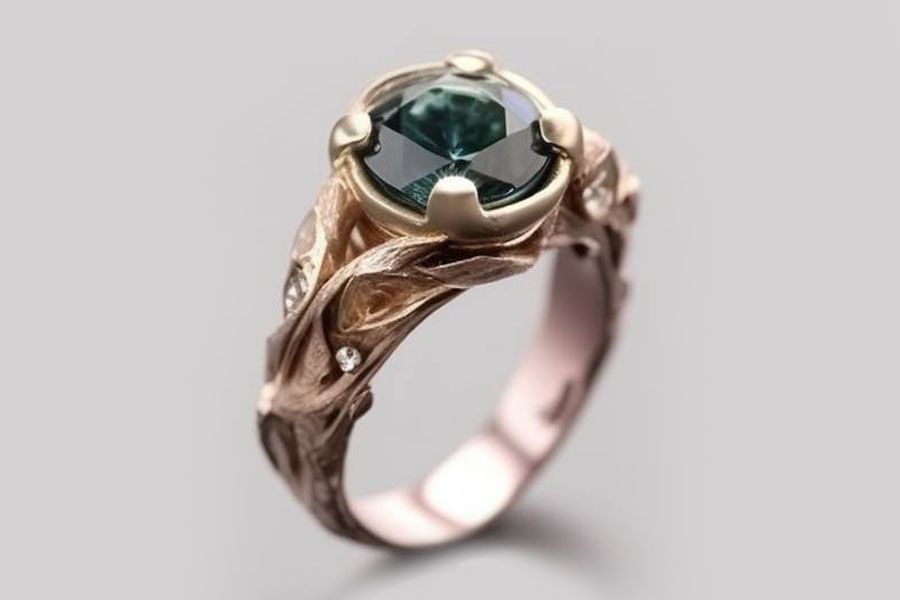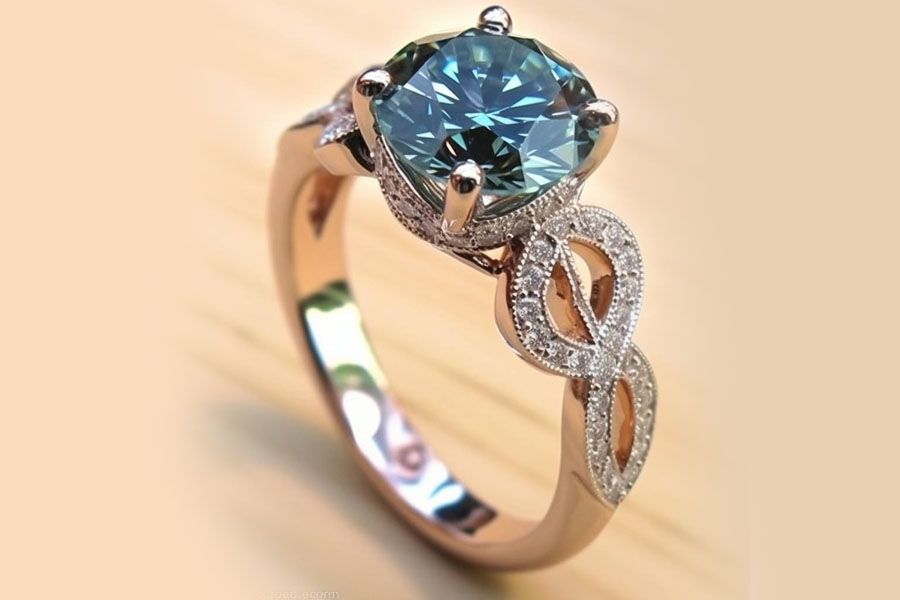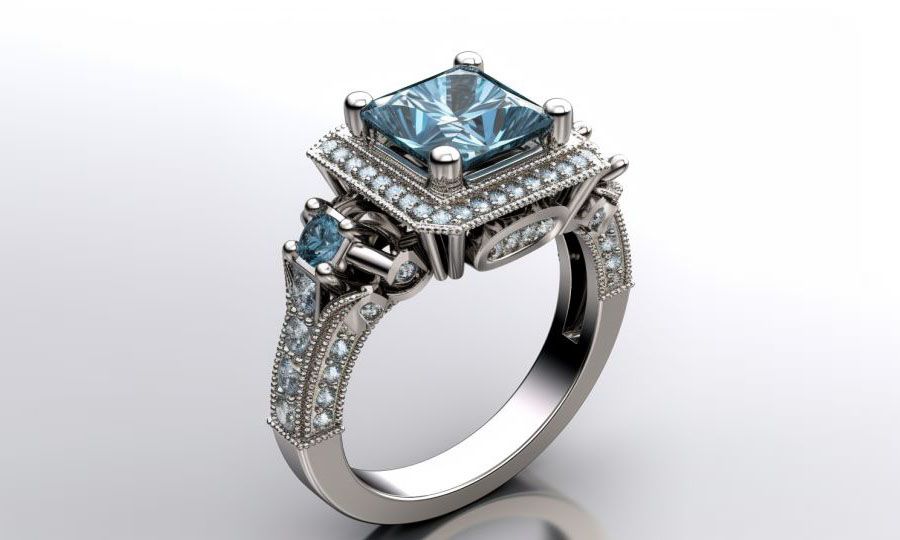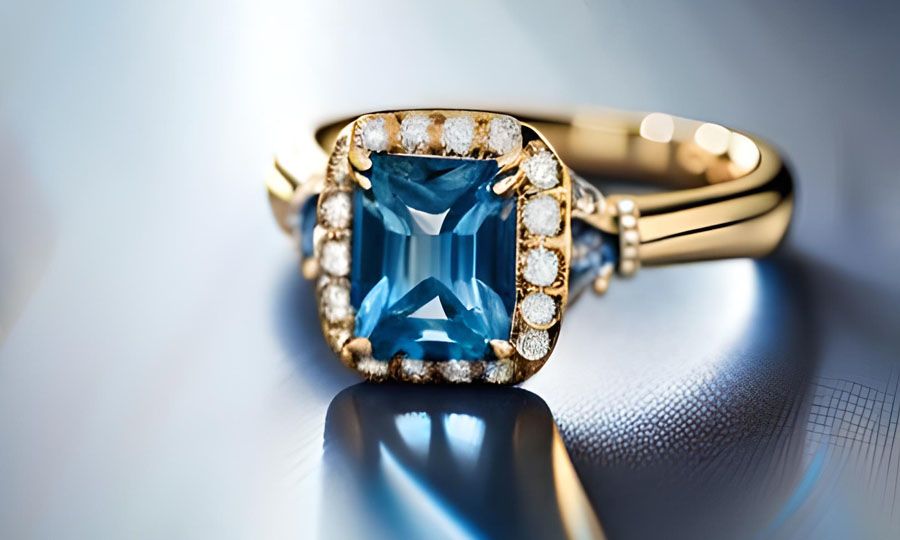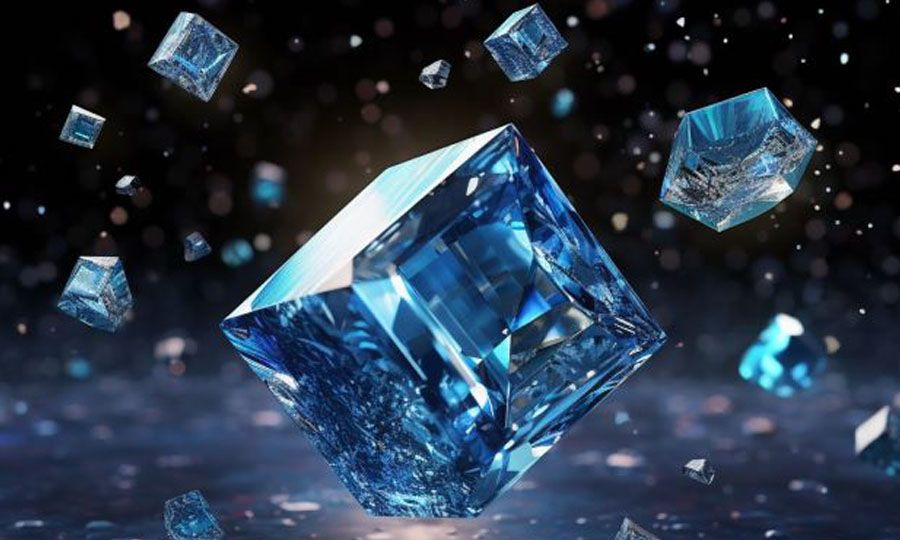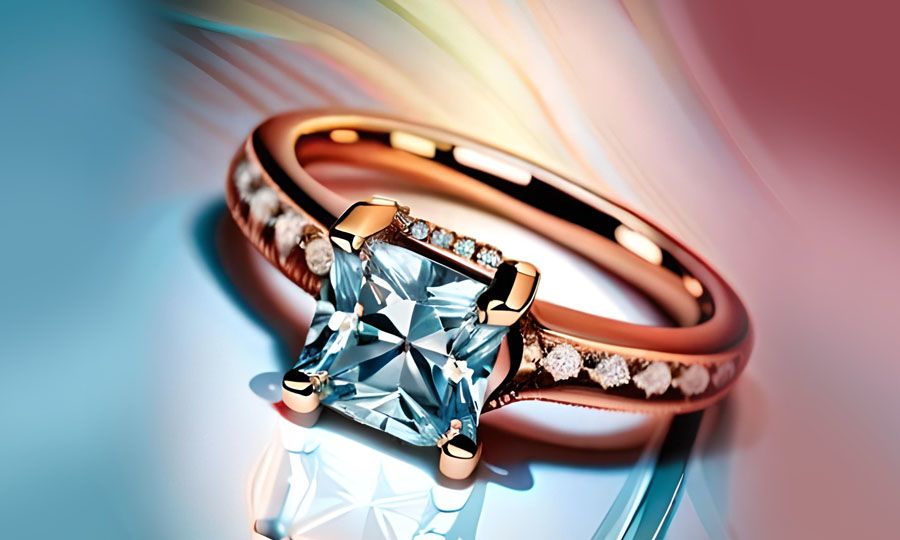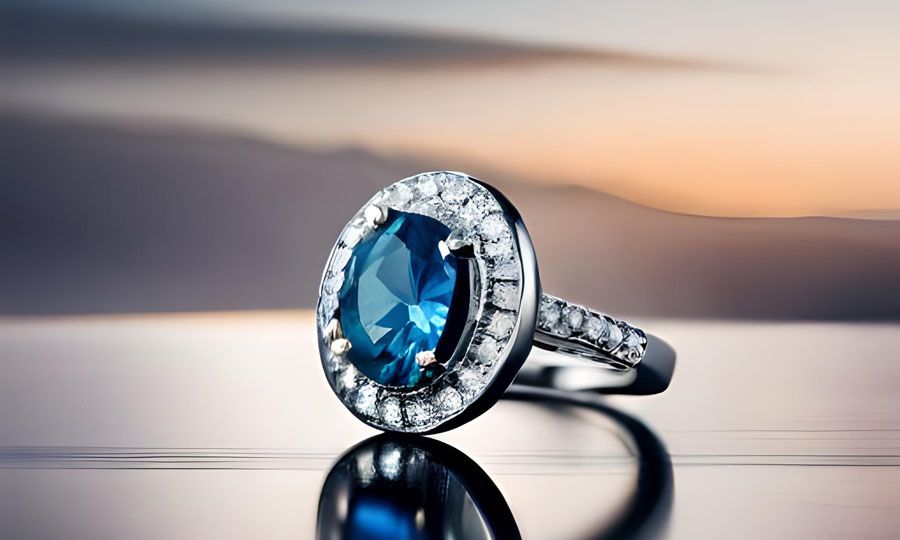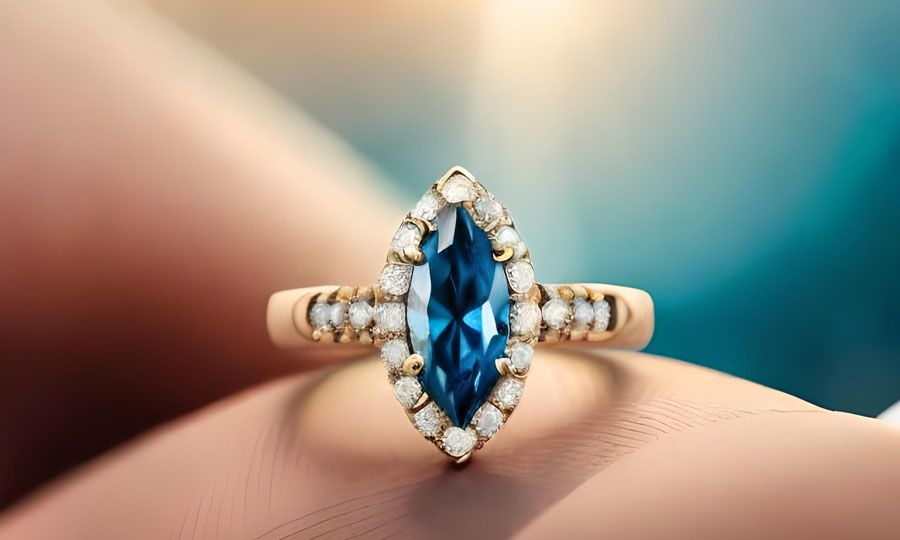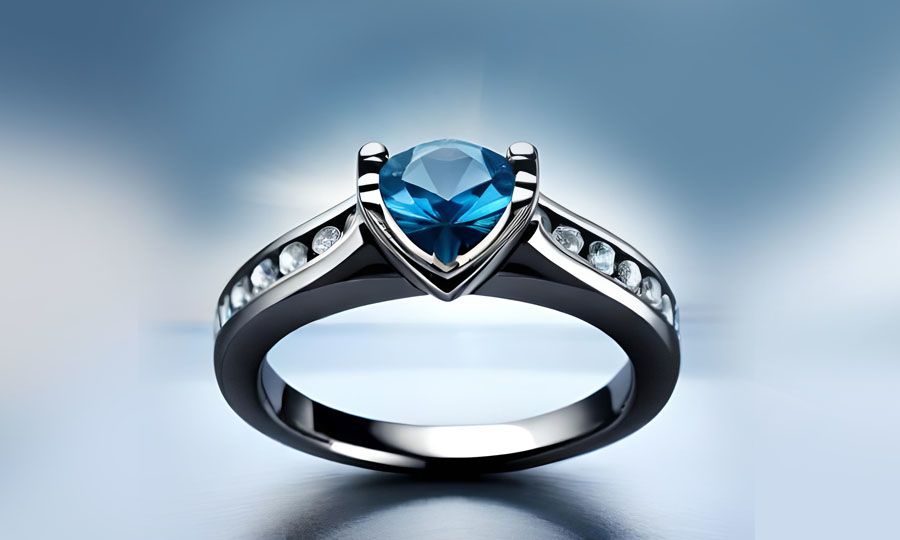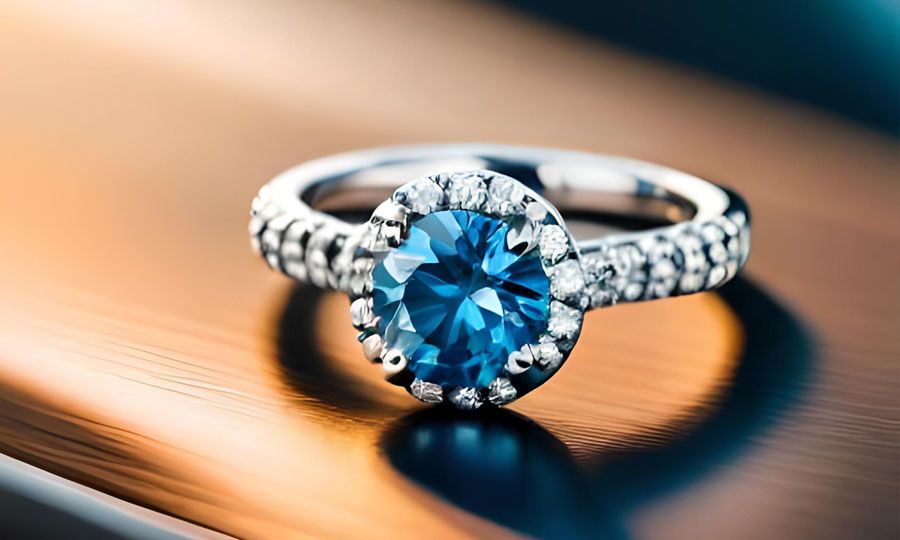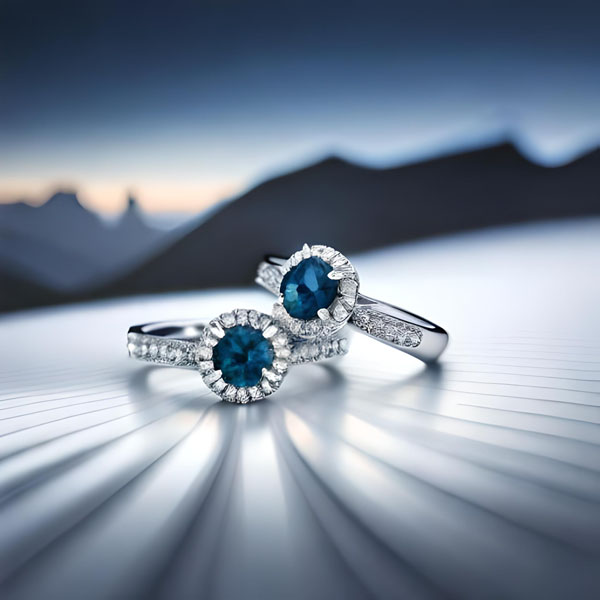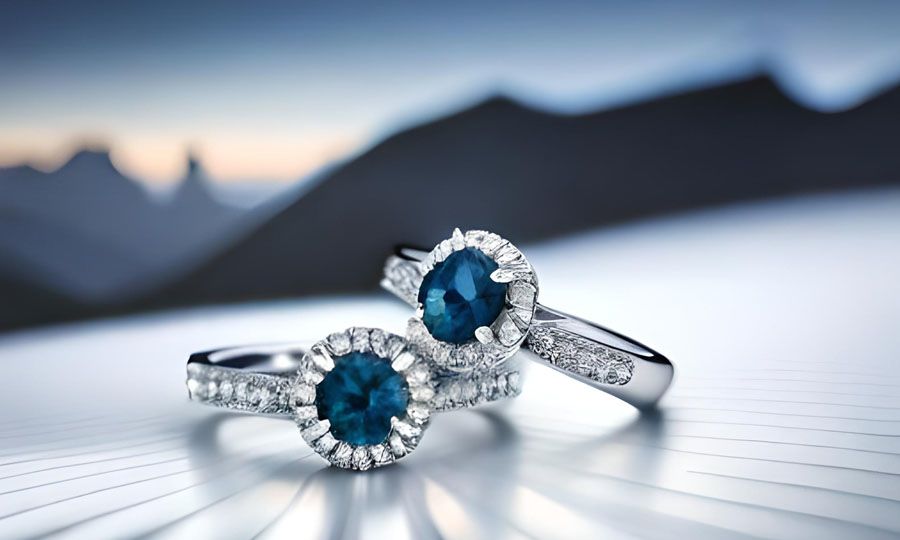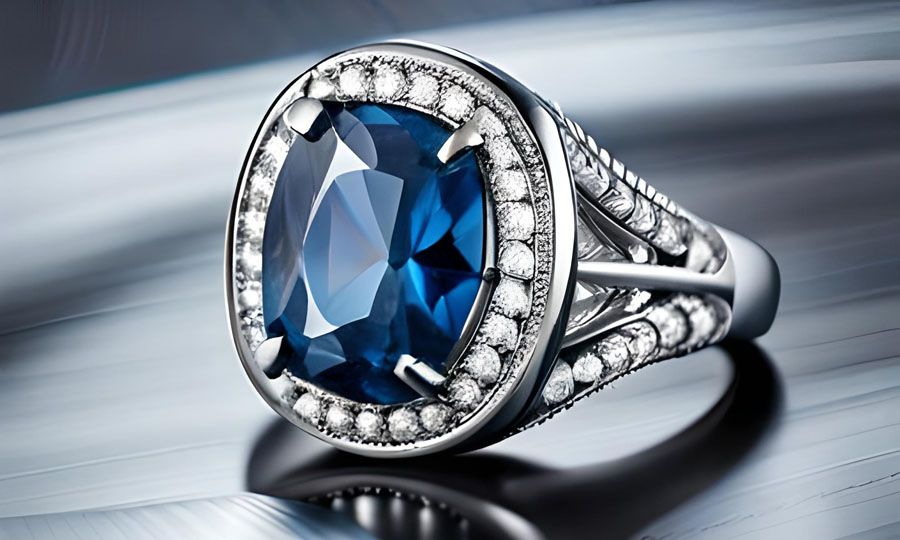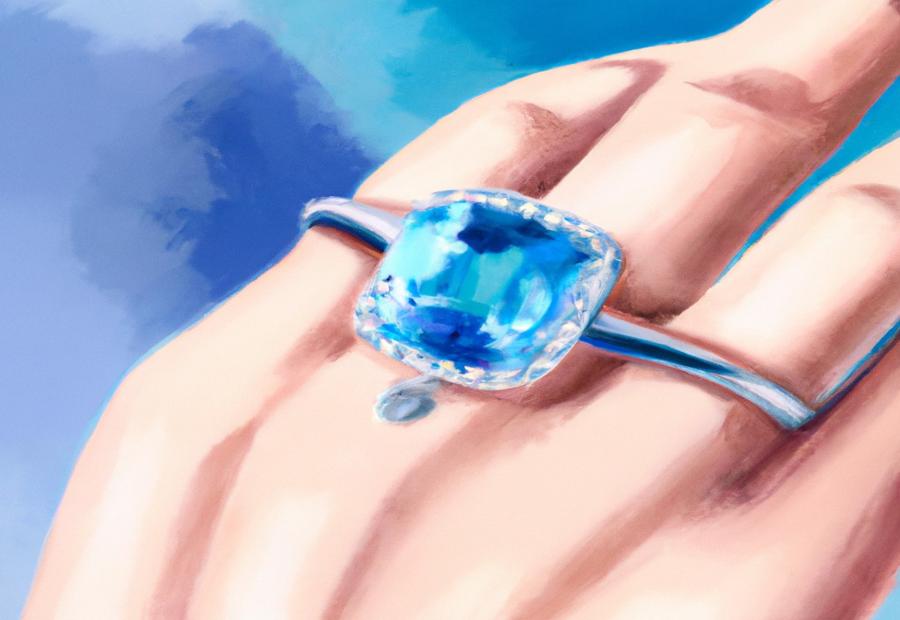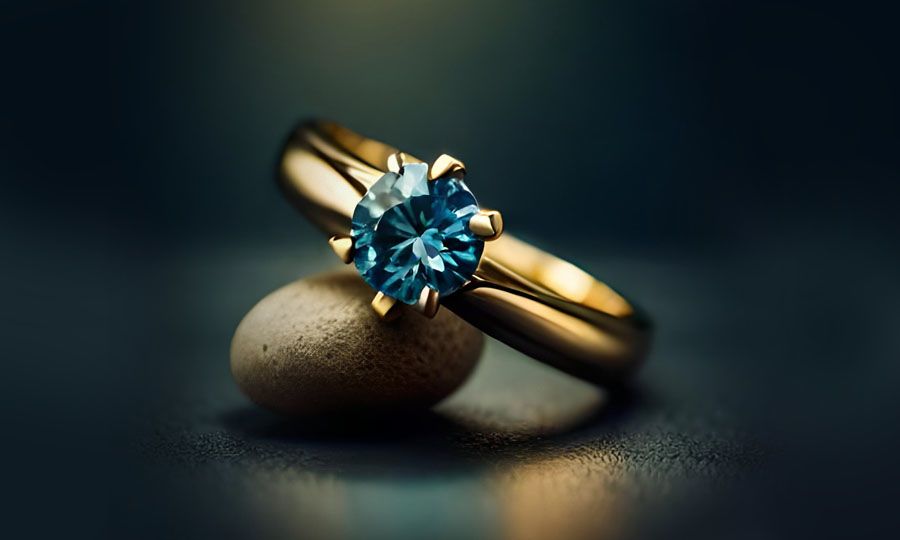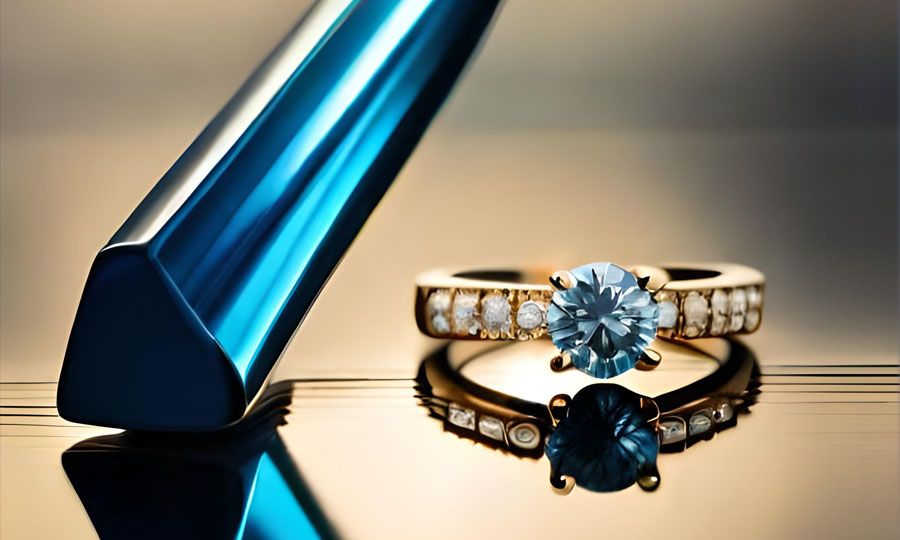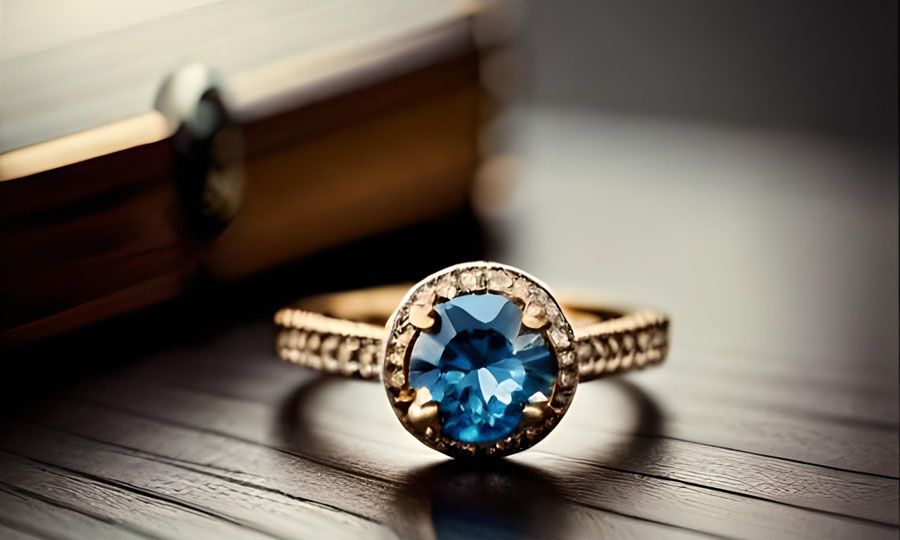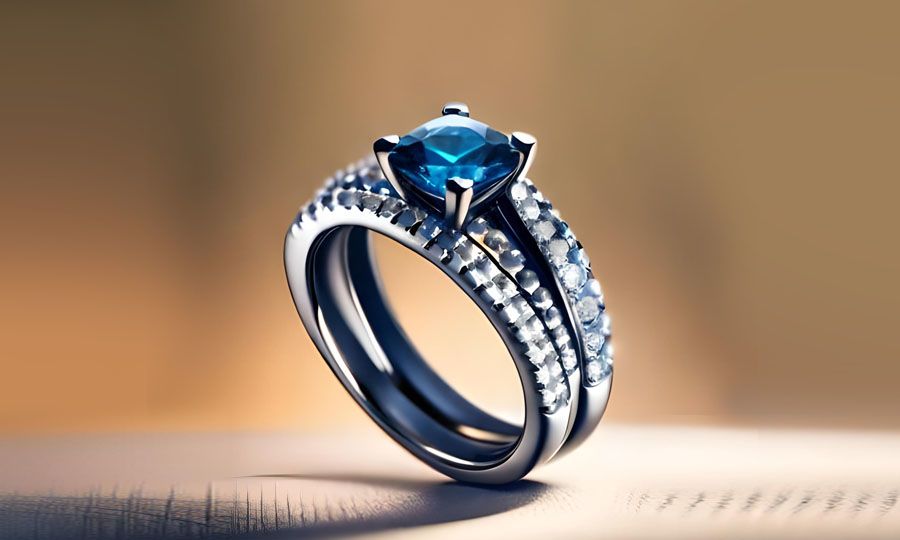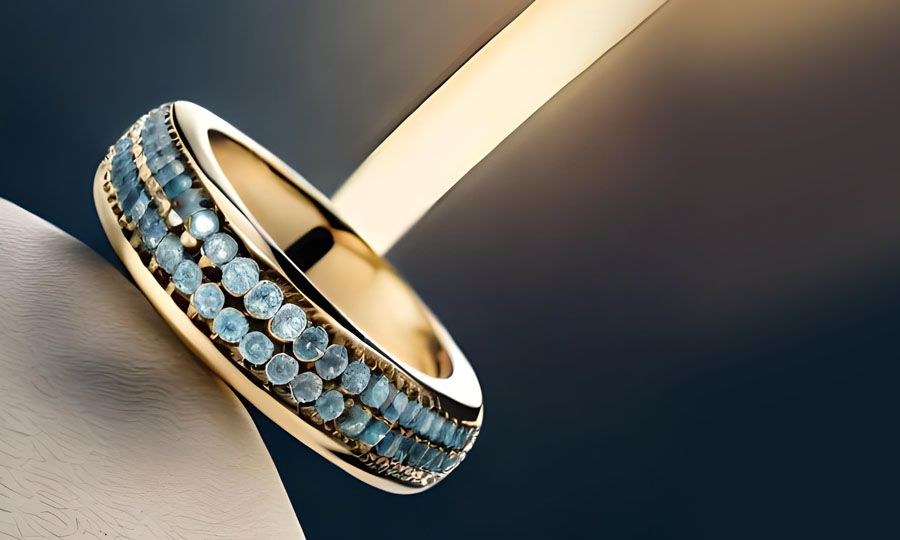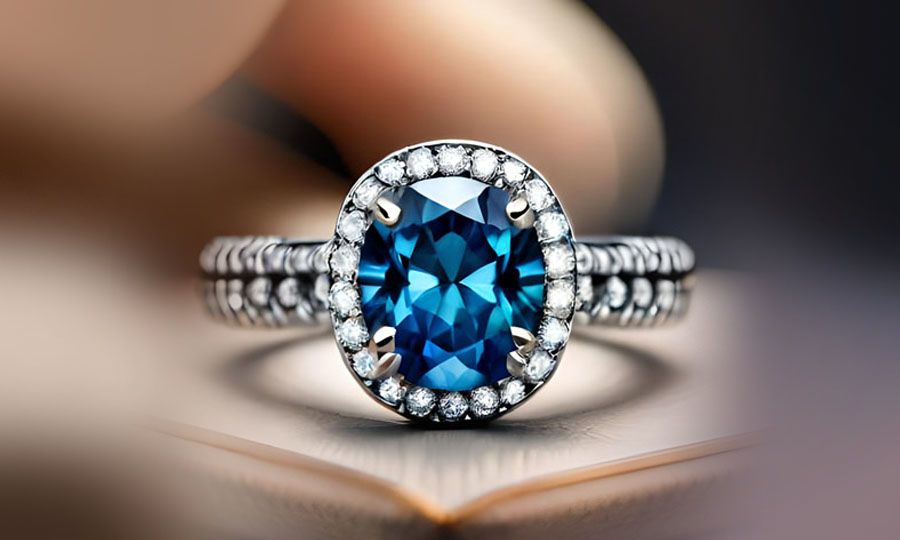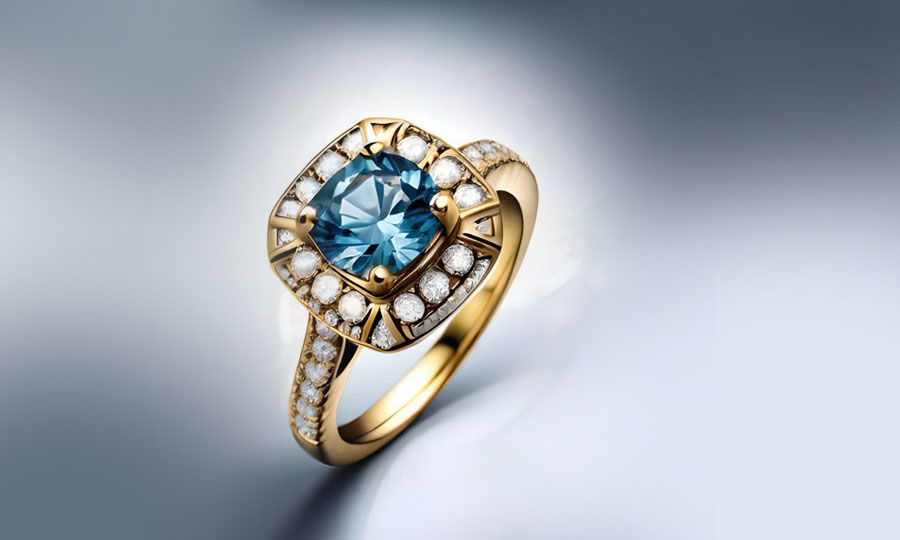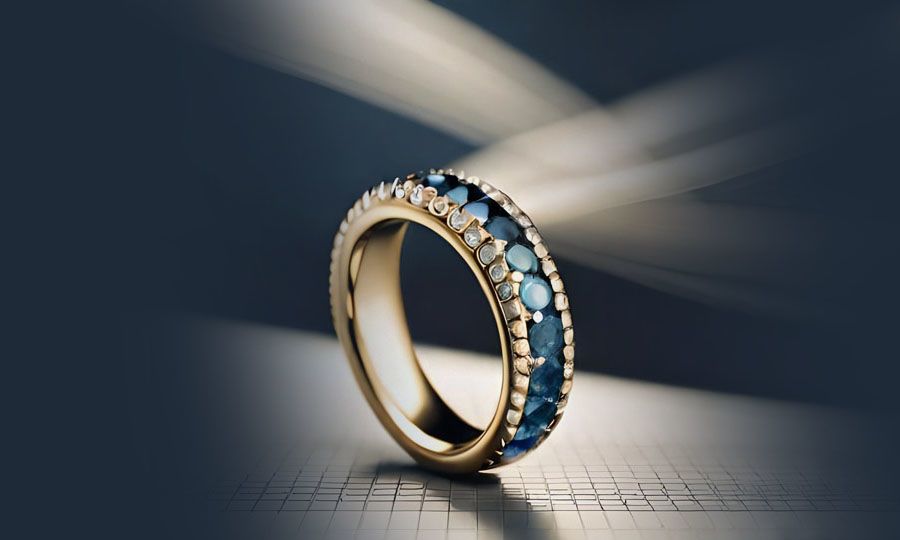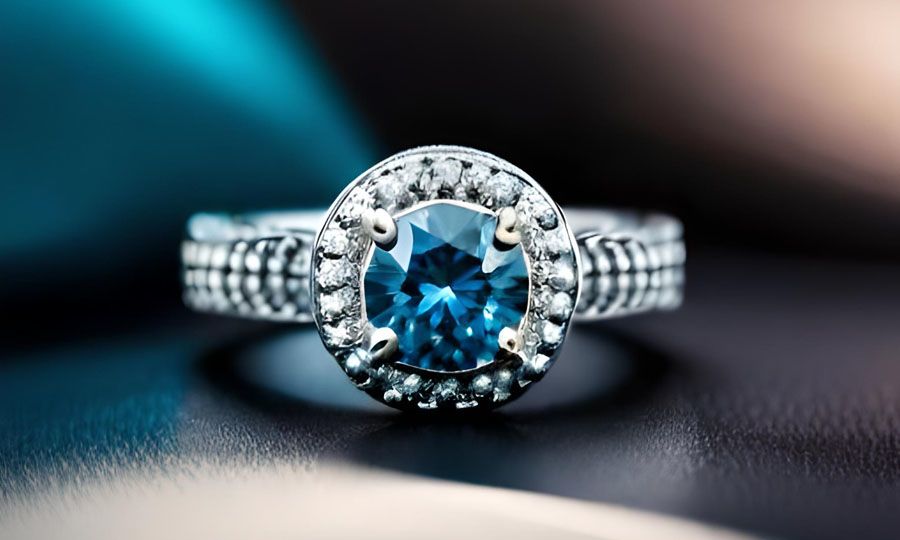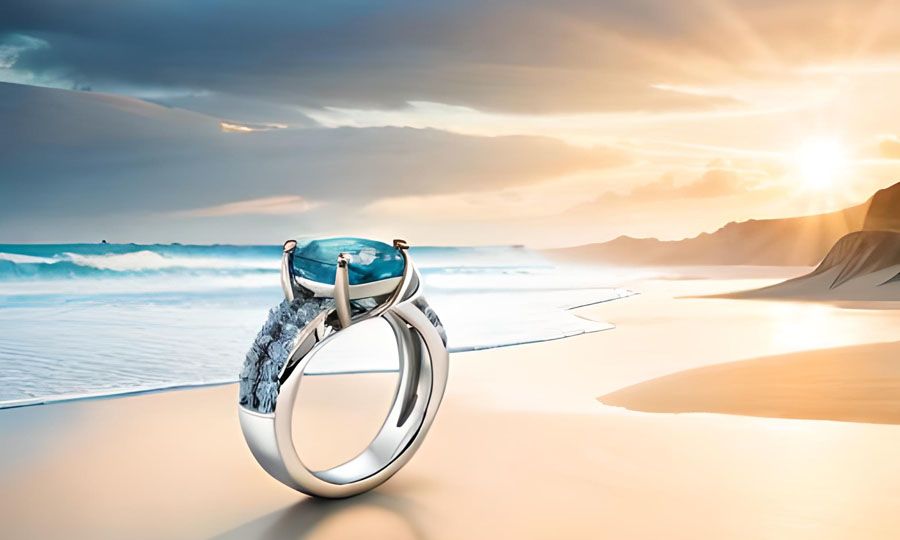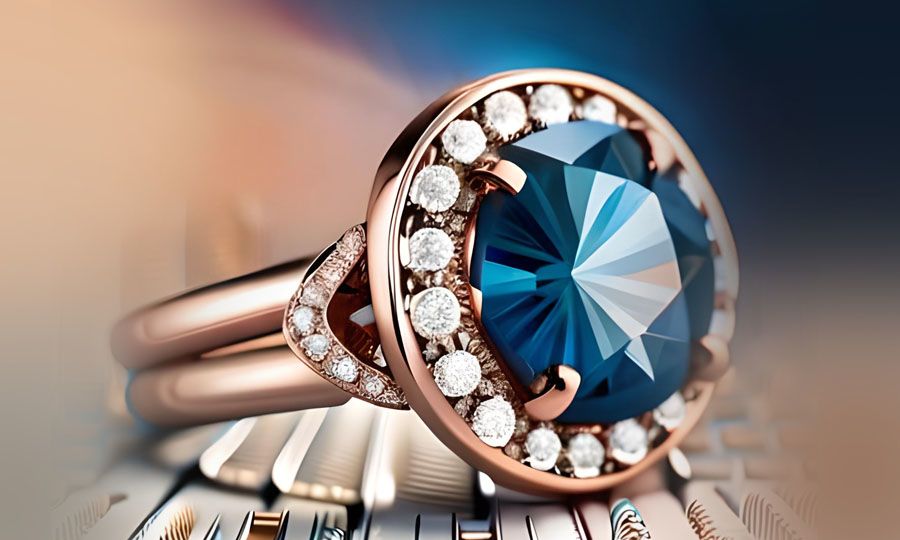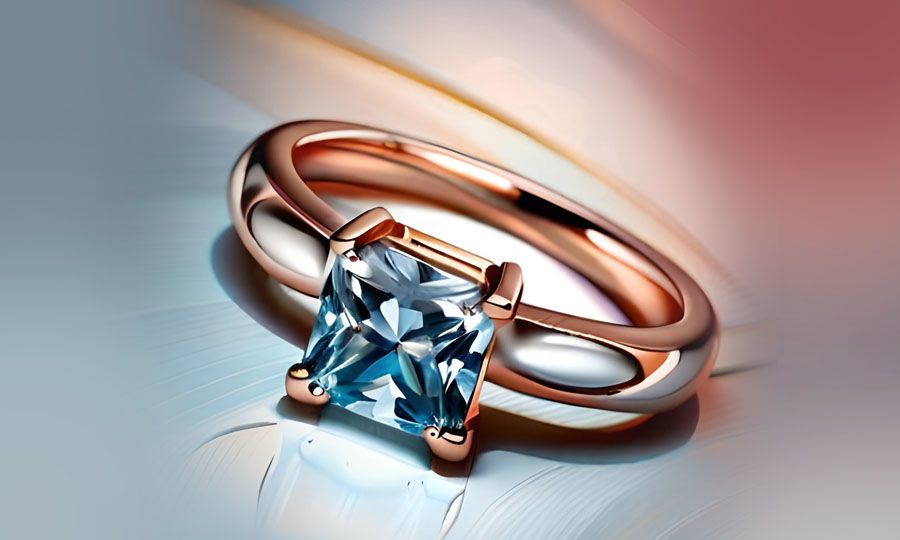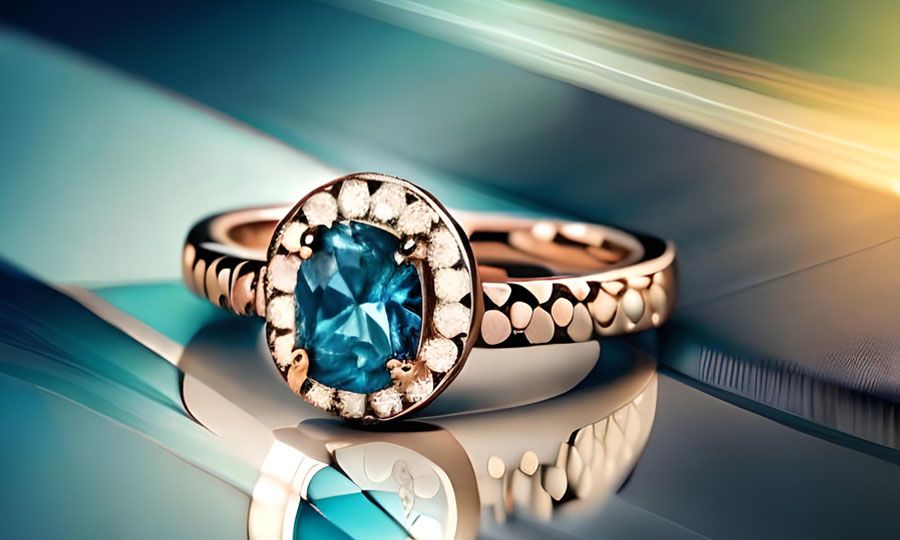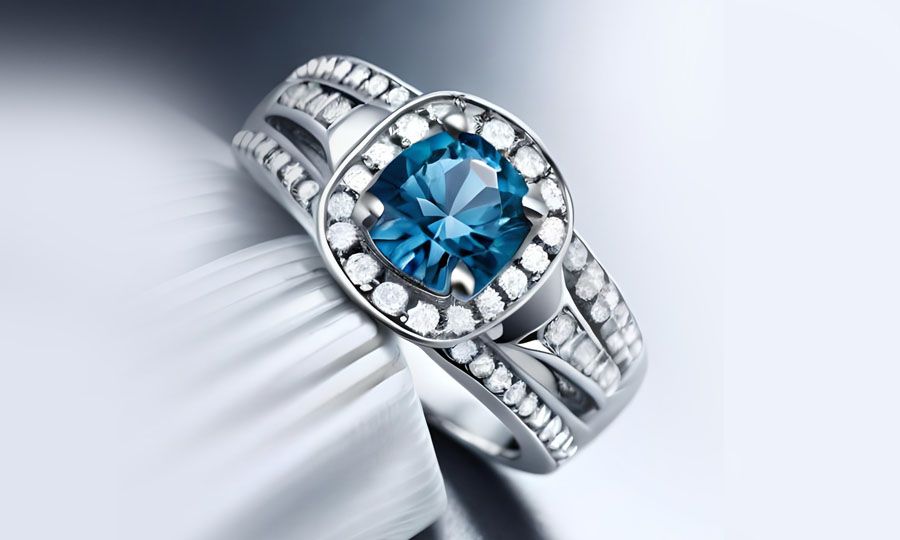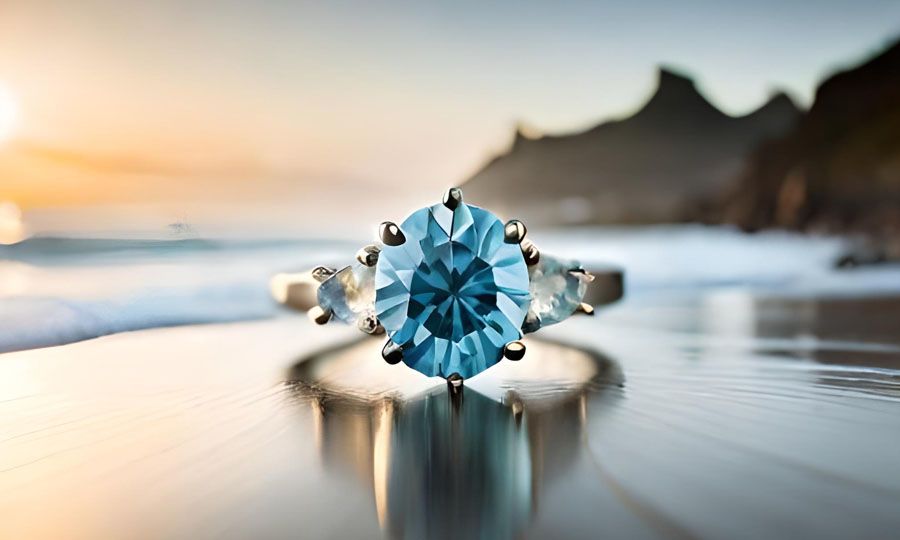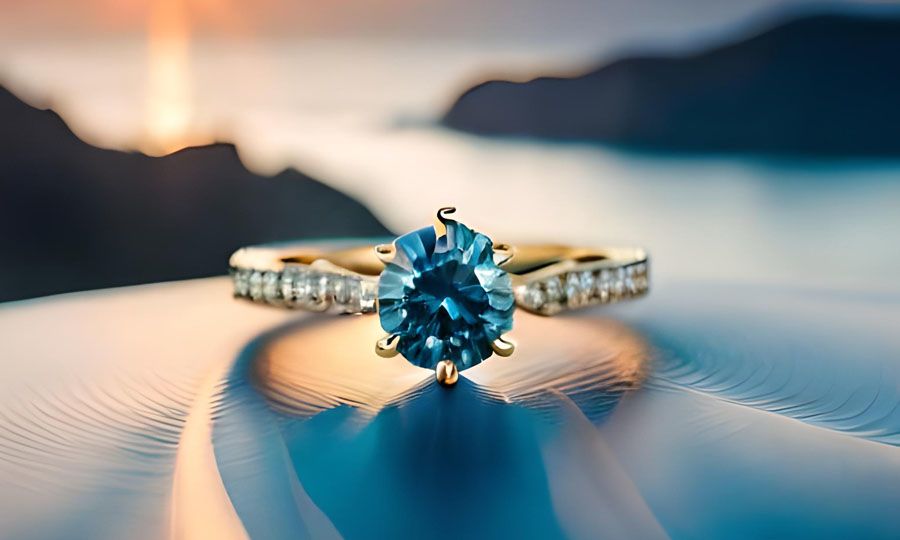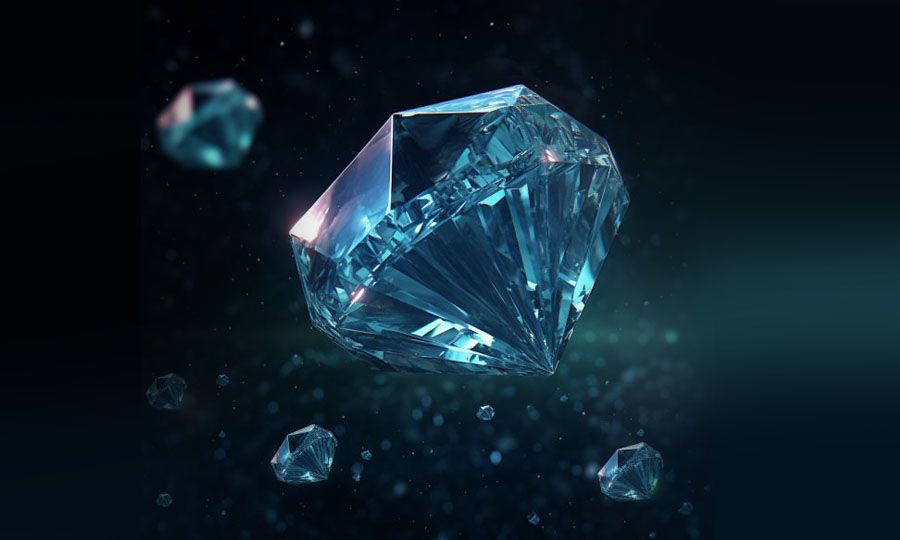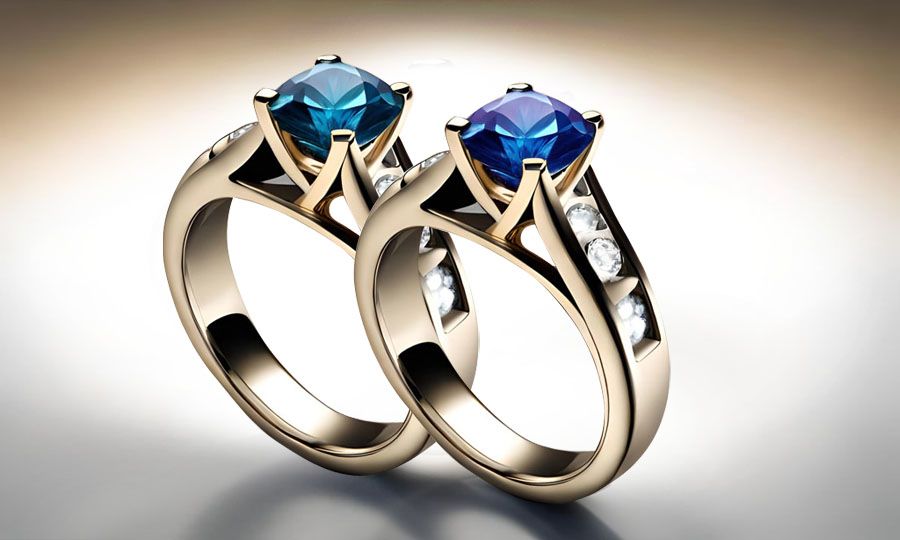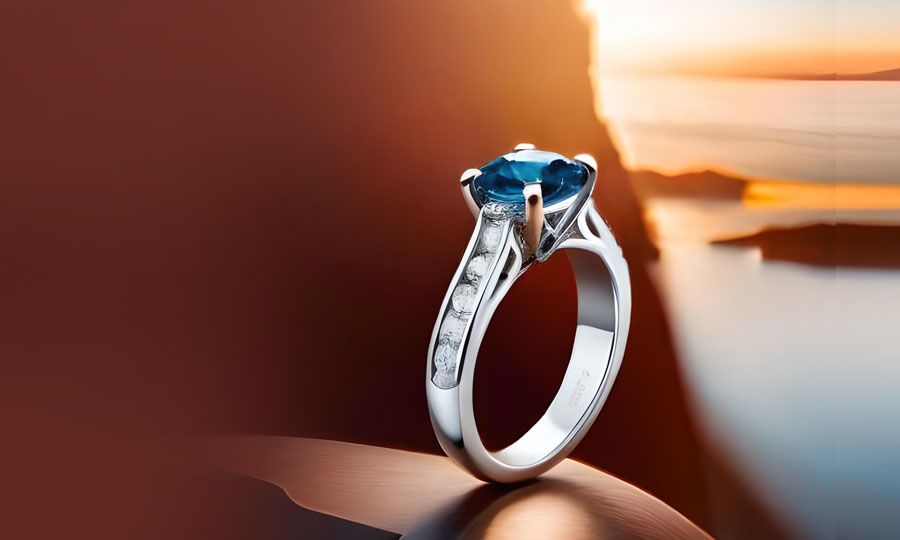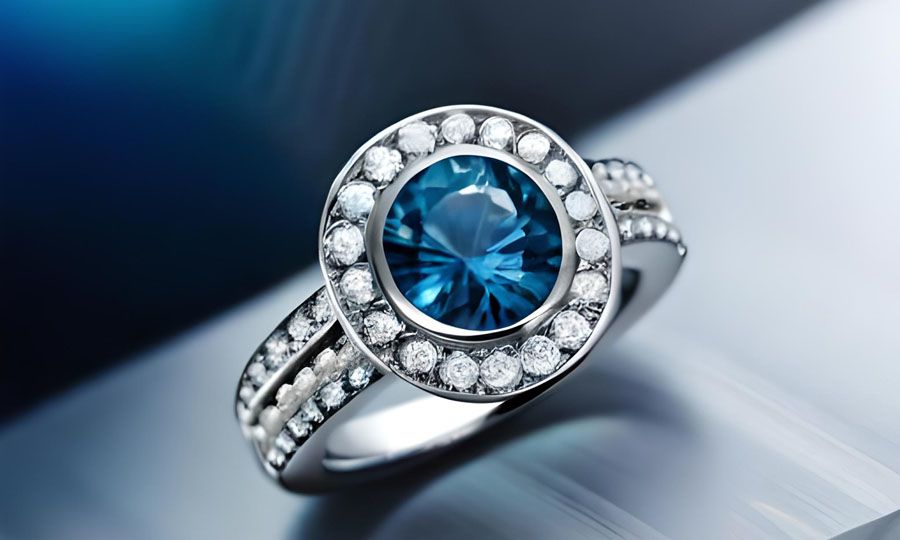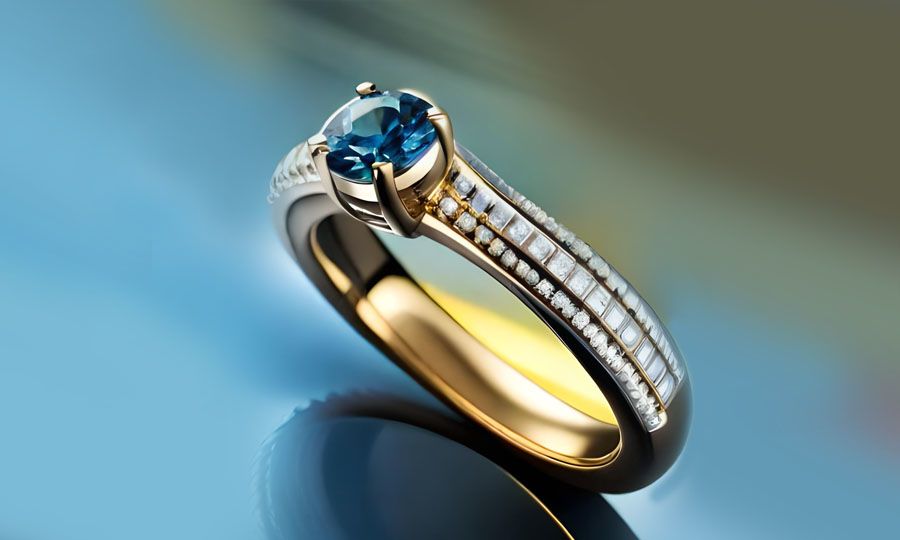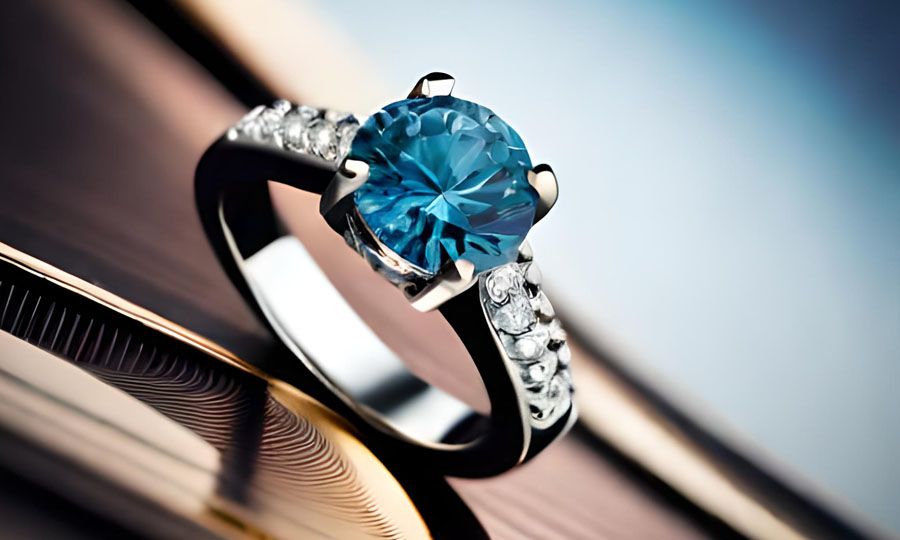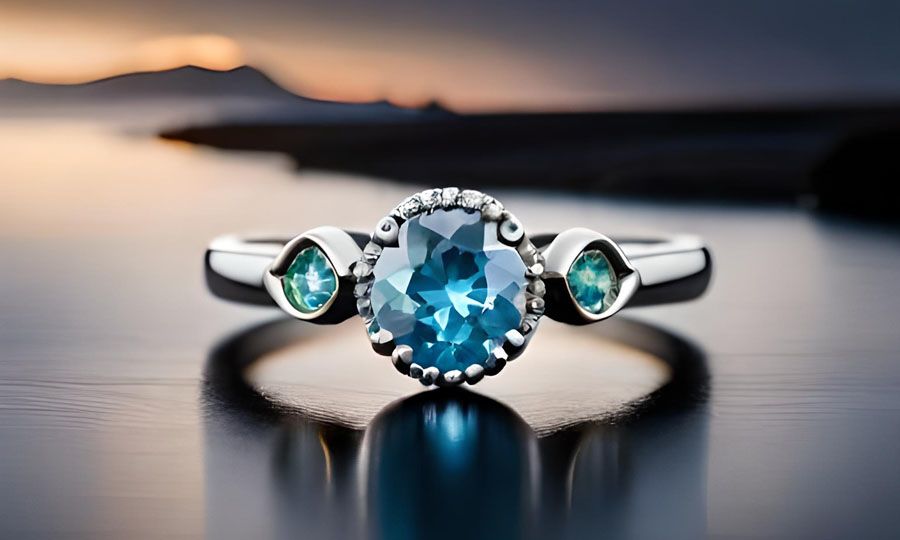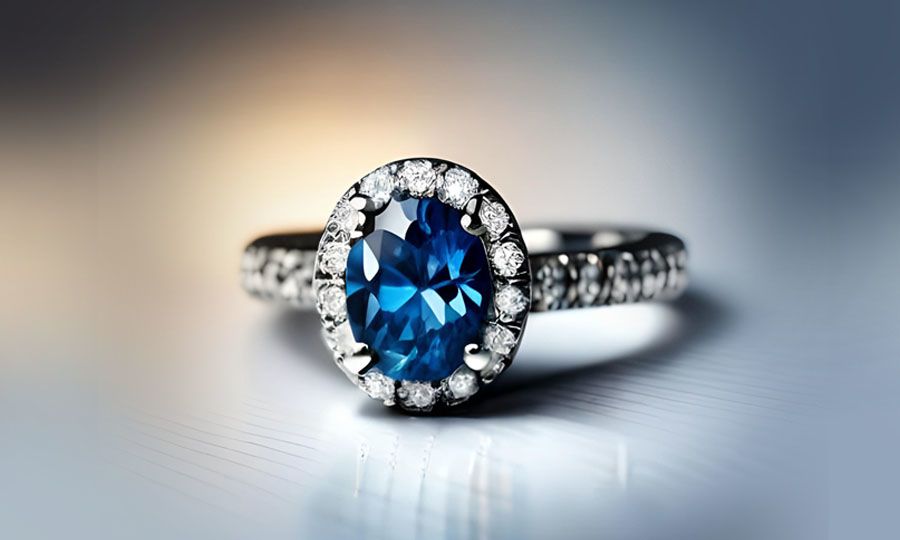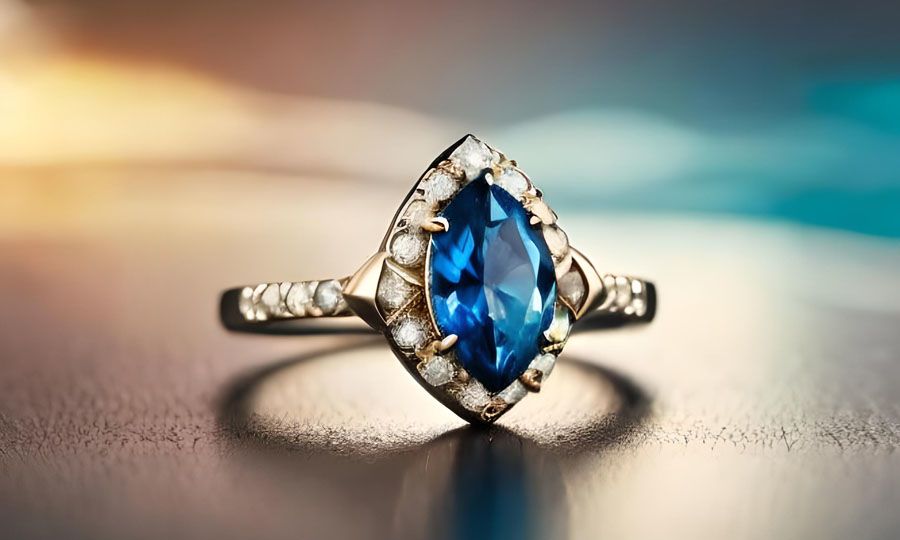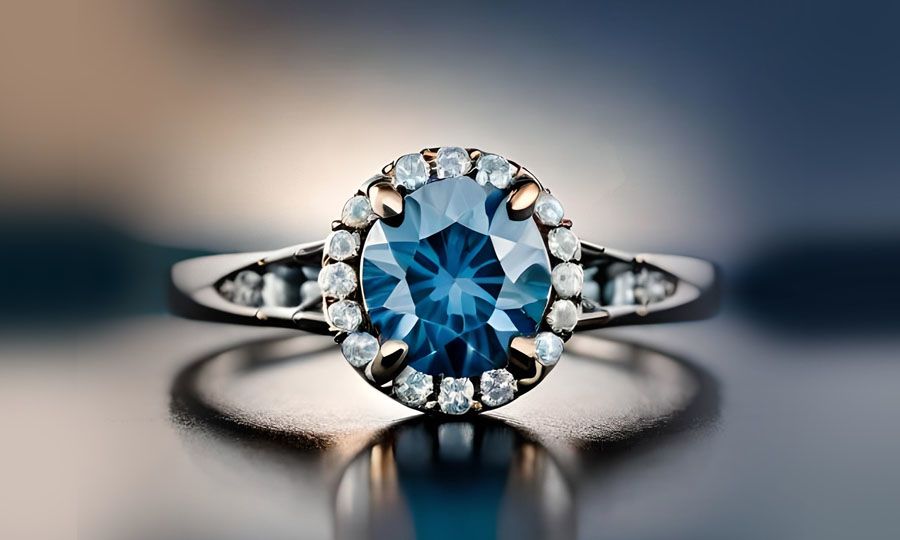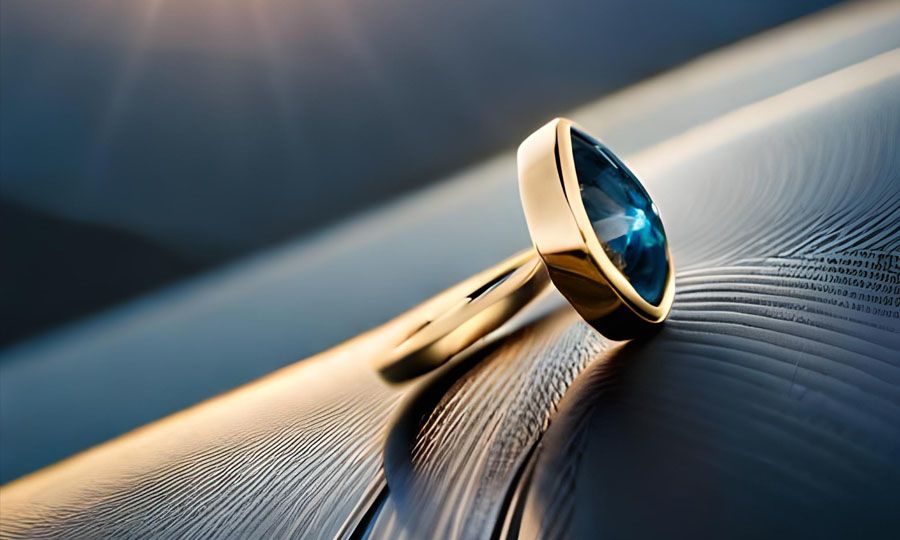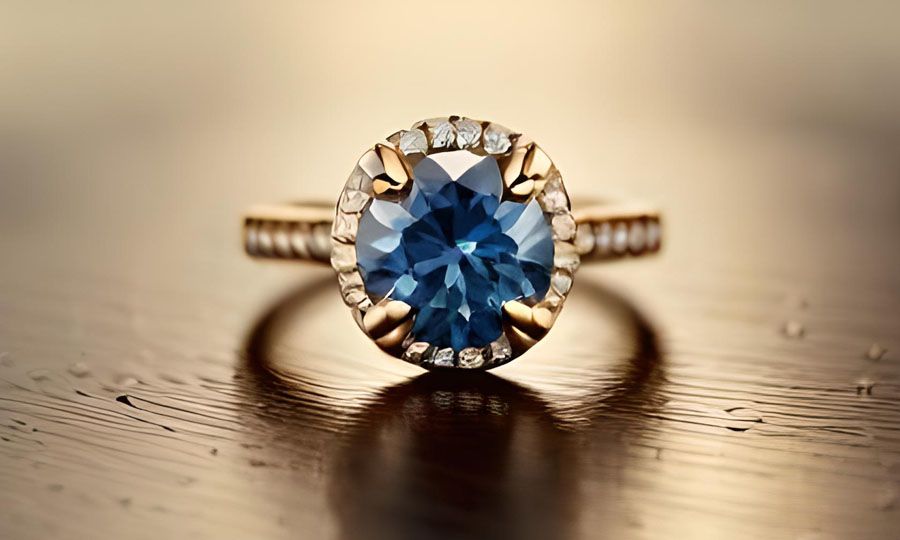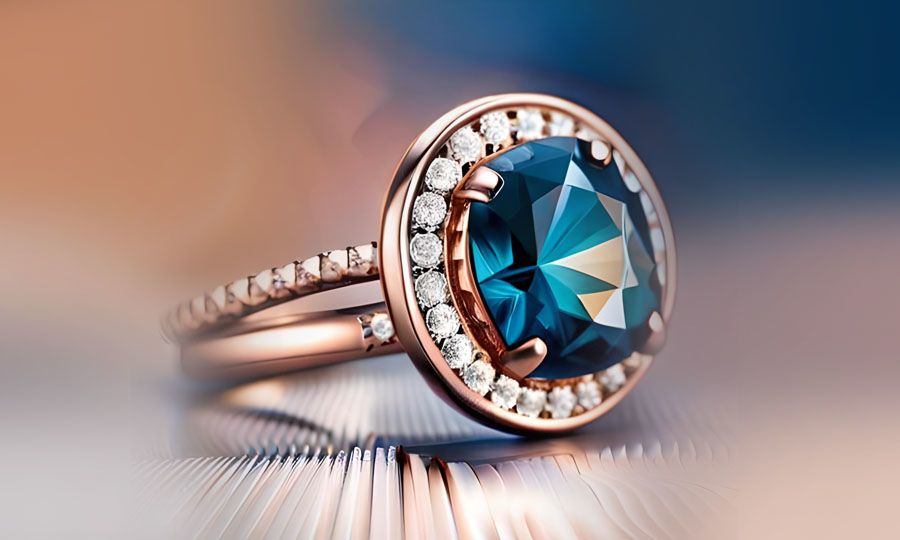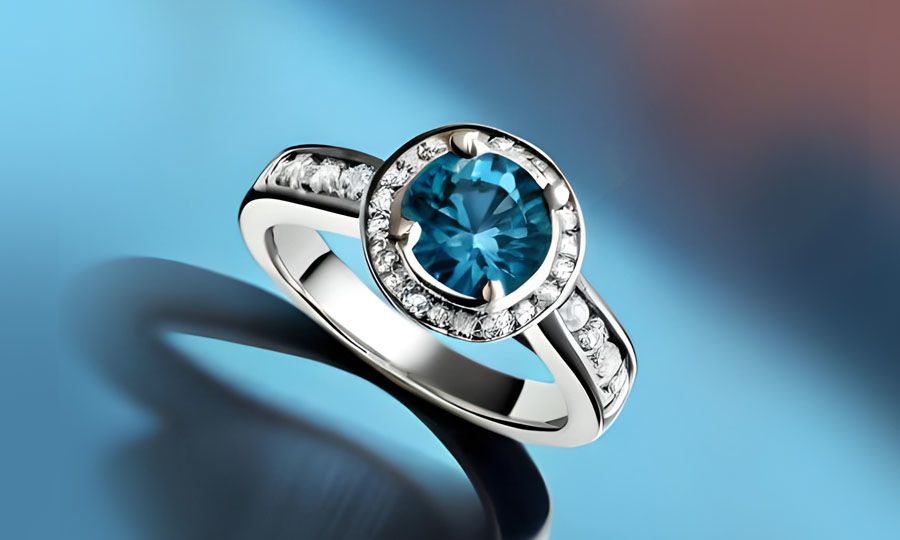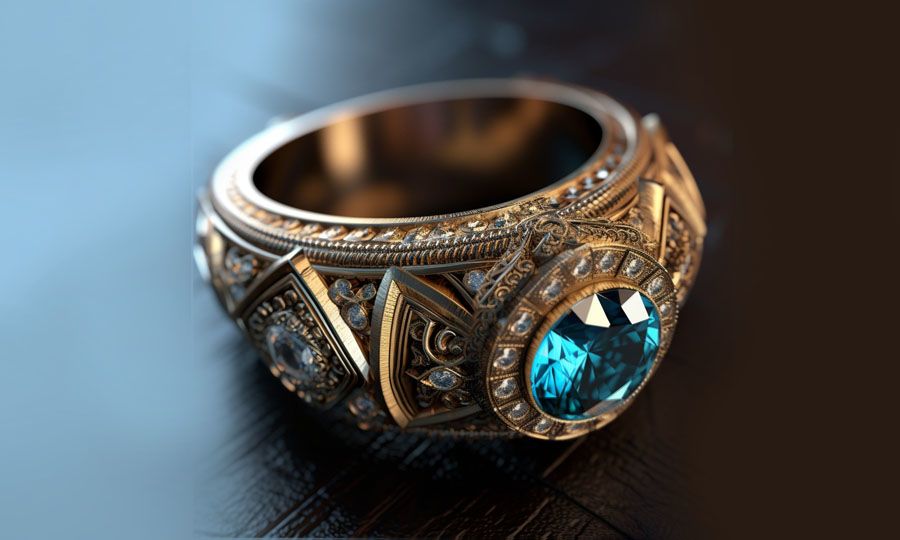
Key Takeaway:
- The main difference between round cut and princess cut diamond engagement rings lies in their shape, facets, and sparkle. Round cut diamonds have been around since 1919 and have 57 facets, offering a timeless appearance and greater forgiveness to color and clarity flaws. Princess cut diamonds have a square shape with pointed corners and have gained popularity in contemporary ring designs due to their brilliance and sparkle.
- Both round and princess cut diamonds are designed to maximize brilliance and sparkle when cut well. However, round diamonds are generally more expensive due to their popularity and the amount of rough diamond that is wasted when cutting them. Princess cut diamonds are generally more affordable due to their shape and fewer facets, making them an ideal choice for those on a budget.
- When choosing an engagement ring, it is essential to consider personal preferences, budget, and the 4Cs of diamonds – color, clarity, carat weight, and cut. The cut of a diamond affects its ability to refract light and create sparkle, making it an important factor in selecting a diamond.
Introduction to Round Cut and Princess Cut Diamond Rings

Photo Credits: Www.Bluediamondring.Com by Ryan Clark
Round Cut and Princess Cut diamonds are two of the most popular cuts for engagement rings. In this section, we will introduce these diamond cuts and provide a glimpse into their unique characteristics. We will also examine the advantages and disadvantages of selecting Round or Princess Cut diamonds. Whether you are in the market for an engagement ring or simply a curious diamond enthusiast, read on to learn more.
What are Round Cut and Princess Cut Diamonds?
Round Cut and Princess Cut diamonds are two popular engagement ring shapes. Round Cut diamonds are known for their versatility and have been favored for centuries. The Princess Cut is more recent but has a symmetrical shape and is usually more affordable.
Round Cut diamonds are more versatile in design while the Princess Cut has a symmetrical shape and a cheaper price point. Here are some of the key differences:
| Round Cut Diamonds |
Princess Cut Diamonds |
| Versatile Shape |
Symmetrical Shape |
| Classic Design |
Affordable Price Point |
| Excellent Brilliance and Sparkle |
High Fire and Brilliance |
| Slightly More Expensive than Princess Cuts on Average |
More Facets than Princess Cuts (see Section 2.1) |
The Round Cut and Princess Cut diamonds have similar qualities such as excellent Brilliance and Sparkle. But they differ in facets, symmetry, cost, fire, value, practical considerations, and size.
Not all Princess Cut diamonds have equal Brilliance or Symmetry. Consider all factors including quality and price point before making a choice. Diamond prices dropped in 2020 due to the pandemic. Be sure to choose your cut wisely, because the shape can significantly impact your bank balance. Consider the pros and cons of both Round Cut and Princess Cut diamond engagement rings before making a decision.
Pros and Cons of Round and Princess Cut Diamond Rings
Round Cut and Princess Cut Diamond Rings both have unique features. This article will discuss the Pros and Cons of each.
Pros of Round Cut Diamonds: Classic, timeless, brilliant sparkle, and higher resale value.
Cons of Round Cut Diamonds: Expensive, less unique.
Pros of Princess Cut Diamonds: Affordable, symmetrical shape, and modern look.
Cons of Princess Cut Diamonds: Less brilliance than round cut diamonds and less versatile in terms of settings.
When deciding between Round Cut and Princess Cut Diamond Rings, personal preference is key. Round cut diamonds may be more costly, but they have a classic appeal. Princess cut diamonds offer a modern look without being expensive.
Pro Tip: Think about if you want your ring to be a classic or contemporary statement piece when making your choice.
Differences Between Round Cut and Princess Cut Diamonds

Photo Credits: Www.Bluediamondring.Com by Noah Moore
When it comes to blue diamond rings, the choice between a round cut or princess cut can greatly impact the overall design and appearance. In this section, we will explore the differences between these two cuts, examining key factors such as facets, symmetry, brilliance, and sparkle. Using these comparisons, we can help you make a more informed decision when selecting the perfect blue diamond ring for your taste and style.
Facets and Symmetry
Facets and symmetry are crucial when deciding a diamond’s value.
These elements affect brilliance, fire, and appearance. The table shows the number of facets and symmetry for round and princess cut diamonds.
| Diamond Cut |
Minimum Number of Facets |
Symmetry |
| Round |
57 |
Excellent |
| Princess |
76 |
Very Good to Excellent |
Round cut diamonds have at least 57 facets, and princess cut diamonds have at least 76. Round cut diamonds have excellent symmetry, and princess cut diamonds have very good to excellent symmetry.
The number and placement of facets affect light interaction. Round cut diamonds sparkle due to an optimized facet pattern. Princess cut diamonds also have excellent brilliance, and show flashes of color in natural light.
Symmetry ensures an uninterrupted flow of light. Both factors create stunning beauty and quality. Consider them when selecting a classic or contemporary diamond.
Brilliance and Sparkle
When choosing a diamond ring, brilliance and sparkle must be taken into account. Diamonds are renowned for their incredible shine, reflecting light from both the surface and inside. Brilliance describes the white light reflected, whilst sparkle refers to its ability to scintillate.
Round-cut and princess-cut diamonds display exceptional brilliance and sparkle. Round-cut diamonds have symmetrical shapes, precise proportions, and expert faceting techniques, making them the most dazzling of all diamond shapes. With 57 or 58 facets, they reflect and refract plenty of light, producing a captivating show of brightness and fire.
Princess-cut diamonds, on the other hand, exhibit a distinct sparkle due to their unique faceting style. With fewer facets than round diamonds, they have a design where the corners face four directions towards the center point, maximizing their sparkle. Rays of light disperse from different corners, resulting in a more iridescent spectacle.
When picking brilliance and sparkle, the diamond cut is also crucial. As one of the Four Cs of diamond grading, the cut refers to the diamond’s proportions, symmetry, and finish. A well-cut diamond maximizes the return of light by dispersing it through its crown and pavilion, producing high levels of fire and scintillation. Bearing these factors in mind, selecting the perfect diamond ring with the right balance of brilliance and sparkle will be sure to delight its wearer!
Round Cut Diamonds: History, Facets, and Versatility

Photo Credits: Www.Bluediamondring.Com by Randy Anderson
Round cut diamonds are the most popular diamond shape for good reason. They are also known as round brilliant diamonds, and were introduced in the early 1900s. In this section, we will explore the history, facets, and versatility that make round cut diamonds so appealing. Round cut diamonds have 58 facets which are designed to maximize the reflection of light, making them one of the most brilliant diamond shapes.
Round cut diamonds have been popular since their introduction, but their popularity has increased in recent years. This is due to the fact that they are a timeless and versatile diamond shape that suits a wide range of jewelry styles. They also tend to have a slightly lower cost per carat than other diamond shapes, making them an excellent choice for those on a budget.
In conclusion, round cut diamonds are a classic and popular choice that will never go out of style. Their ability to reflect light, their versatility, and their long history make them an excellent choice for any diamond enthusiast.
The History of Round Cut Diamonds
Round cut diamonds have a long history in the diamond industry. They are one of the most beloved shapes today. It all started in the early 1900s when diamond cutting was introduced to European jewelers. Back then, diamonds were cut into basic symmetrical shapes with flat surfaces. But, as technology improved, round cut diamonds emerged.
The first round brilliant cut appeared in 1919 and gained traction in the 1950s. Nowadays, round cut consists of precisely arranged triangular and kite-shaped facets. This optimizes light reflection and dispersion while enhancing brilliance.
Before round cuts became popular, other fancy cuts like rose-cut and table-cut were the norm. Tables were the main feature of these unique designs.
Marcel Tolkowsky is credited with inventing the ideal proportion for round brilliant diamonds. He was inspired by mathematical models, taking into account factors such as depth percentage and table size. He found an optimal balance between desirable light performance characteristics, such as fire and brilliance. His proportions are still relevant today.
The Facets of a Round Cut Diamond
Round cut diamonds are popular for their beauty and versatility. This is due to their facets which give them sparkle and fire. The more facets a diamond has, the more light it reflects and refracts. This creates a wonderful glimmer which stands out in different lighting conditions.
It’s important to know features that make round cut diamonds shine. These include cut grade, table percentage, culet size, girdle thickness and facet ratio. Each of these create a unique balance that affects how light interacts with the diamond’s surface.
In ancient times round cut diamonds were available, but it wasn’t until 1919 when Marcel Tolkowsky described an “ideal” round brilliant cut that it was possible to predictably produce maximum brightness, fire, scintillation, and dispersion of light.
When buying a round cut diamond for an engagement ring or other jewelry, consider its facets to get an idea of how it looks in different lighting. This can be natural sunlight or overcast lighting.
Our tips for shopping for round-cut diamonds include:
- Checking for unevenness in faceting patterns
- Not going too low on width-to-height ratios
- Prioritizing cut quality over carat size
The Versatility of Round Cut Diamonds
Round cut diamonds are popular for engagement rings. Their circular shape and 58 facets make them sparkle in all lighting conditions. This gives them a timeless and elegant look. The versatility of the round cut diamond isn’t only limited to design, but extends to the 4 Cs: Cut, Clarity, Color, and Carat Weight.
The round brilliant cut is the most precise and gives maximum light return and brilliance. Buyers who prioritize higher carat weight or better clarity can still opt for other cuts while maintaining the classic round cut appearance.
Round cut diamonds are also common in earrings and pendants. They complement any outfit or occasion. The consistent high quality and timeless look of the round cut diamond make it a staple in the diamond industry.
In conclusion, the versatility of round cut diamonds makes it an excellent choice for those looking for classic, yet adaptable jewelry that will never go out of style.
Princess Cut Diamonds: Symmetrical Shape, Brilliance, and Affordability

Photo Credits: Www.Bluediamondring.Com by Wayne Thompson
Experience the perfect combination of elegance and affordability with princess cut diamonds. In this section, we’ll explore the exquisite symmetry of the princess cut diamond, its radiant brilliance, and its affordability compared to other diamond cuts. Princess cut diamond is one of the most popular diamond cuts, known for its exceptional sparkle. It has roughly 76 facets which maximize the reflection of light and enhance its brilliance. Additionally, princess cut diamonds are usually priced lower than round diamonds of the same carat weight, making it an excellent choice for those on a budget. Get ready to discover the unique qualities that make the princess cut diamond an excellent choice for any occasion.
The Symmetrical Shape of a Princess Cut Diamond
Princess cut diamonds are popular for their shape – square or rectangular, with its facets at an angle. This creates parallel lines that reflect light internally, resulting in a sparkle that makes the diamond beautiful.
It is popular for engagement rings, as it can be set into many styles. It shines and never compromises its brilliance. You can pair it with other diamonds and gemstones to make unique designs.
It is more affordable than round cut diamonds. But still, it remains desirable for its symmetry and fire. It’s a great choice for people who want a stylish, dazzling engagement ring without spending too much.
The brilliance and fire of a diamond depend on factors like cut, color, clarity, and carat weight. But a well-cut princess diamond will leave a lasting impression.
The Brilliance of a Princess Cut Diamond
Princess cut diamonds are renowned for their exceptional brilliance. This is why they are becoming more popular as engagement rings. The shape of a princess is distinct and contributes to its sparkle. It has four sides and either 57 or 76 facets, depending on whether it is square or rectangular. This diamond emits a stunning light display.
The brilliance of a princess cut diamond is due to its faceting arrangements and angle cuts. These maximize the diamond’s total internal reflection, leading to an incredible fire display. When set in a solitaire or halo engagement ring setting, the diamond is lifted towards the light source, enhancing the play of light.
In contrast to other diamond shapes like round or oval, princess cut diamonds can have extra weight placed at their corners without affecting their appearance. This makes them more affordable, while still providing similar sparkle.
In conclusion, princess cut diamonds offer the same brilliance as round cut diamonds but at a more affordable price. When picking your next engagement ring, choose something that sets you apart!
The Affordability of Princess Cut Diamonds
When shopping for diamonds, people often seek the best value. Princess cut diamonds are famous for their reasonable prices and are a popular choice. The way they are cut results in less wastage, requiring less material to be bought – reducing the cost. They still offer the same brilliance and sparkle as round cut diamonds, making them a great value.
If you want an engagement ring or jewelry that won’t break the bank – princess cut diamonds are a good option. Their unique cut can make smaller diamonds appear larger, thanks to how they reflect light.
In conclusion, princess cut diamonds provide a great balance between quality and affordability – making them ideal for anyone on a budget.
Cut and Its Impact on Diamond Sparkle and Value

Photo Credits: Www.Bluediamondring.Com by Tyler Campbell
When it comes to blue diamond rings, the cut of the diamond plays a critical role in both its sparkle and value. In fact, the cut of a diamond is one of the 4Cs (carat weight, color, clarity, and cut) that determine its overall quality and value. In this section, we will explore how the cut of a diamond impacts its appearance, particularly in terms of its sparkle. A well-cut diamond will reflect light internally and externally, resulting in a bright and vibrant appearance. However, poor cuts can cause the light to leak out of the sides or bottom, resulting in a dull and lifeless appearance. We will also investigate how the cut influences the value of a diamond, as different cuts can alter the way that light is reflected through the stone. For example, round brilliant diamonds are the most popular and valuable cut due to their ability to reflect the most light. Overall, the cut of a diamond is an important factor to consider when choosing a blue diamond ring.
The Importance of Cut in Diamond Sparkle
When it comes to diamonds, cut should not be overlooked. It affects how light interacts with the stone. This determines the sparkle we associate with diamonds.
For maximum beauty and brilliance, a well-cut diamond is essential. This allows for light to enter through the top (the table) and bounce around, creating a signature sparkle. A poorly-cut diamond won’t reflect light optimally and may appear dull.
The quality of the cut impacts the brilliance and sparkle. Historically, brighter diamonds have been seen as higher-quality gems. So, when choosing a diamond, pay attention to the cut grade.
Choosing a higher cut grade can result in maximum sparkle. Investing in a higher-cut grade of a “lower” graded diamond may be a smart decision if it offers more fire at an affordable price point. Find the right balance of quality and budget to achieve the perfect diamond that sparkles.
The Impact of Cut on Diamond Value
The value of diamonds is greatly impacted by their cut. This factor influences a diamond’s appearance and brilliance, and therefore its worth. A well-cut diamond can significantly increase its value, while a poorly cut one has the opposite effect.
There is a grading system to help buyers assess cut quality. This table shows how cut quality can affect the diamond’s value:
| Cut |
Value |
| Excellent |
Increases value |
| Very Good |
Increases value |
| Good |
Stable value |
| Fair |
Lowers value |
| Poor |
Decreases value greatly |
The amount of light entering and reflecting from a diamond depends on its cut grade, which is determined by the quality and arrangement of its facets. Poorly cut diamonds will be less fiery and sparkly than well-cut ones, making them appear less valuable.
When purchasing a diamond, prioritize its cut over other factors. A higher-quality cut may cost more initially, but it can enhance the stone’s overall value in the long run.
Generally, diamonds with excellent to very good cuts are high-value. Round diamonds have an intricate cut and mesmerizing sparkle, but princess diamonds are also affordable yet brilliant.
In conclusion, the importance of a diamond’s cut on its value cannot be stressed enough. Investing in a well-cut diamond will result in a beautiful stone with lasting financial value.
Why Round Diamonds are Generally Pricier than Princess Diamonds

Photo Credits: Www.Bluediamondring.Com by Juan Perez
Did you know that princess diamonds are usually more expensive than round diamonds? In this section, we’ll uncover the reasons behind this pricing discrepancy by exploring the factors that influence diamond pricing. We’ll also take a closer look at why princess diamonds tend to be pricier than round diamonds. Get ready to dive into the fascinating world of diamond pricing!
Factors that Affect Diamond Pricing
To price a diamond, several factors come to play. Carat weight matters; the greater the weight, the higher the cost. A diamond’s cut quality–proportions, symmetry, and polish–affects its value. Colorless diamonds are more valuable, and graded on a scale from Flawless to Included (I1-I3). Brand name or origin may also influence its price.
Round diamonds are scarce and popular, so demand increases and prices go up. Princess cut diamonds are plentiful, making them cheaper. Small imperfections, even if unnoticeable, influence budgeting. Prices also vary due to supply and demand or corporate entities. So, why choose between a queen and a princess when you can have a round diamond that reigns supreme in price?
Why Round Diamonds are Generally More Expensive than Princess Diamonds
Round diamonds are usually pricier than princess diamonds. This is owing to a few things, like their popularity and versatility. Round diamonds have been favored for engagement rings for many years, resulting in a high demand and higher prices. Furthermore, more time and skill is needed to cut a round diamond, with more wastage in the process.
Consumers are ready to pay extra for a sought-after product. Cutting a round diamond is more complex than other cuts, with its numerous facets requiring craftsmanship. This adds to the higher cost of round diamonds.
Versatility-wise, round diamonds stand out. They are fitting for any setting and jewelry style, making them a great option for engagements rings and other pieces. Princess-cut diamonds, however, have sharp edges which restrict their usage in different styles.
Summing up, the high cost of round diamonds is due to a number of factors. From its classic shape to its detailed craftsmanship, every facet is cut precisely, leading to a stunning sparkle in the end product. Popularity, cost, and fire-wise, round diamonds generally fare better.
Comparing Round and Princess Cuts’ Popularity, Cost, and Fire and Brilliance

Photo Credits: Www.Bluediamondring.Com by Richard Anderson
Round cut or princess cut blue diamond rings? Which is the more popular choice, and which one offers more fire and brilliance? In this section, we’ll compare the popularity, cost, and aesthetics of these two diamond cuts. From examining sales trends to analyzing diamond structure, we’ll provide a comprehensive breakdown of the differences between round cut and princess cut diamonds.
Popularity of Round Cut and Princess Cut Diamonds
Round cut & princess cut diamonds are two of the most common diamond shapes for engagement rings. They both capture light amazingly, creating lovely sparkle and showcasing the diamond’s radiance.
Round cut diamonds have a classic look and circular shape that accentuates the diamond’s fire, scintillation, and brilliance. In 2019, 75% of all global polished-diamond sales were round brilliant-cut diamonds according to the GIA.
Princess cut diamonds come in second, as they have a modern, square shape and multiple facets to create an impressive sparkle.
Both diamond shapes are versatile and depend on personal preferences, cultural trends, budget, and sentimental reasons. Although each has unique features, they remain popular for their ability to show off a diamond’s beauty.
For those considering prices, cost comparison between round and princess cut diamonds can help decide which fits their budget.
Cost Comparison of Round and Princess Cut Diamonds
When selecting an engagement ring, it is essential to compare the costs of round and princess cut diamonds. Princess diamonds tend to be cheaper due to their high availability and low demand. To contrast prices, a table can be made with their cost range based on carat weight and quality grading.
For instance, a 1-carat round diamond of D color and VS2 clarity may be priced between $5,000 and $12,000. Meanwhile, a 1-carat princess diamond of the same criteria could cost anywhere from $4,000 to $9,000. However, the prices could change based on the diamond’s unique features.
In addition, supply and demand play a large part in the price gap between round and princess diamonds. Princess diamonds are more sought-after and easier to cut, making them more common and less expensive than round diamonds with similar characteristics.
It should be noted that simply comparing costs may not be the best approach to choose between these cuts. Personal preferences and the 4 Cs – cut quality, clarity grade, color grade, and carat weight – should also be taken into account.
It is worth noting that this section does not contain any historical data regarding the cost comparison of round and princess cut diamonds. Thus, this paragraph will remain blank without any reference information to show history.
Comparing Fire and Brilliance of Round and Princess Cut Diamonds
Diamonds are renowned for their fire and brilliance. There is constant debate over round cut and princess cut diamonds. Round cut diamonds have a spectacular sparkle and flashy fire. While princess cut diamonds have both elegance and brilliance.
To understand the differences between the two diamond cuts better, we created a table below. It highlights the variations in fire and sparkle.
|
Round Cut Diamonds |
Princess Cut Diamonds |
| Fire |
Light disperses, making rainbows of colors. |
Prismatic effect gives bright white flashes. |
| Sparkle |
Evenly distributed light is maximally bright. |
Light is darker in some areas on the edges. |
The table shows that round cut diamonds display higher dispersion of light, resulting in rainbows of colors and brilliance on the stone’s surface. But, princess cut diamonds have bright flashes of white light due to prismatic effect.
Both diamond cuts are ideal for engagement rings. As they offer different kinds of sparkle – one being fiery while the other being clear.
Before choosing a round or princess cut diamond for your engagement ring, consider your personal preferences, budget, and quality grading factors. These are carat weight, clarity, and color grade. Make an informed decision with our guide on diamond ring selection to get a stunning piece of jewelry.
Tips for Choosing Between Round and Princess Cut Diamonds for Engagement Rings

Photo Credits: Www.Bluediamondring.Com by Brandon Ramirez
When it comes to choosing between round and princess cut diamonds for engagement rings, there are several factors to consider. Personal preferences, budget, and the 4 Cs (carat weight, clarity, cut, color) are key elements that can impact the overall look and value of the ring. Let’s explore these factors in more detail to help you make an informed decision that’s perfect for you and your significant other.
Consider Your Personal Preferences
Round or princess cut diamonds? It’s important to note that the cut impacts the gemstone’s fire and brilliance. Round diamonds have 58 facets for a classic look, while princess cuts have 76 facets providing a more modern feel.
Thinking about the style you prefer for your engagement ring? Do you like traditional styles or something non-traditional? Additionally, take into account your lifestyle, job and daily activities to choose a shape that works best for everyday wear.
Remember, engagement rings signify commitment, love and shared values. Your personal preferences are key when selecting an engagement ring. Ultimately, it comes down to whether you love the timeless elegance of round cuts or the modern edge of princess cuts. Think carefully, and find the diamond that represents your unique personality!
Consider Your Budget
When buying an engagement ring, finances are important. Set a budget based on cut, clarity, carat weight and color. Allocate funds based on your priorities. Invest more in cut for better quality. Don’t exceed your budget for emotional reasons. Compare round and princess-cut diamonds. Personal preferences and hand size may influence choice. Setting types and metal preferences also matter. Round-cut diamonds are more popular and expensive. Princess-cut diamonds are a more affordable option with fire. If money is tight, look for smaller carats and fewer inclusions. Stick to necessary guidelines on cut grade when making your decision.
Consider the 4 Cs
When choosing an engagement ring, consider the 4 Cs – carat weight, cut, color and clarity. These factors affect the diamond’s beauty and cost, whether it’s round or princess cut. Carat weight is the weight of the diamond – bigger diamonds are usually more expensive. Cut refers to how the diamond is crafted. Color is ranked on a scale from D (colorless) to Z (yellow/brown), and even slight variations can make a difference. Clarity shows any differences in appearance or blemishes, impacting the price and brilliance.
Think about what you value most – size or brilliance. Compare different options within your budget and keep in mind personal taste and style. Princess cut diamonds usually have lower prices due to less labor-intensive cutting process. But two diamonds with similar carat weight, color and clarity could still have significant differences in price based on their cut grade.
Gemologists at Brilliant Earth say, “if two diamonds have G color and VS2 clarity grades, but one has an Excellent cut grade, while the other is Good, its market value could differ by thousands of dollars.” So, considering the 4 Cs and cut grade can save you money and leave you with a beautiful ring!
Other Popular Diamond Shapes and Their Prices, Sizes, and Practical Considerations

Photo Credits: Www.Bluediamondring.Com by Anthony King
If you’re in the market for a diamond ring, you’ve likely encountered common shapes like round and princess cuts. However, it’s important to note that there are several other popular diamond shapes available. This section will explore various diamond shapes including oval, emerald, cushion, and pear cuts. Each cut has its own unique set of prices, sizes, and practical considerations that buyers should consider before purchasing. Let’s dive in to discover more about these popular diamond shapes.
Oval Cut Diamonds
When it comes to diamonds for an engagement ring, oval cut is unique and trendy. Pros and cons are listed below. An advantage is that the shape gives a larger appearance. However, may appear less brilliant than other cuts. Also, it is flattering, feminine and romantic, perfect for an engagement ring. But it reflects imperfections and inclusions more easily.
Oval cut diamonds are versatile and can be set in four or six-prong mountings. But they require a lower carat weight for maximum brilliance compared to round cut diamonds. It is essential to look for ideal symmetry for an even design when viewed from all angles. Also, check for a “bow-tie” effect which will lead to light not reflecting correctly through the diamond.
In summary, choosing an oval cut diamond is high-end and trendy. The shape is eye-catching and unique, making it a valuable option for your engagement ring.
Emerald Cut Diamonds
Emerald cut diamonds are special. They have a rectangular shape with cropped corners. They have fewer facets than round-cut diamonds, but their lengthwise planes show off clarity and color better. Plus, their elongated shape looks bigger than other diamonds with the same carat weight.
Using a table to compare emerald cut diamonds is great. Categories like ‘Facets and Symmetry’, ‘Brilliance and Sparkle’, ‘History’, ‘Versatility’, ‘Shape’, ‘Cost Comparison’, and ‘Fire and Brilliance’ give helpful data. The table makes it easier to compare emeralds with other diamonds.
When you look at mid-grade emeralds, they need a higher clarity standard than other cuts. This means their price can be different.
If you’re looking for something vintage, a cushion cut diamond is perfect!
Cushion Cut Diamonds
Cushion Cut Diamonds are known for their unique versatility – they can be set into modern or antique styles, making them perfect for those seeking a vintage-style engagement ring.
When picking cushion cut diamonds, it’s important to consider their clarity and color grades, as well as certification. A slightly lower carat weight can reduce cost without impacting appearance.
To maximize sparkle, pick the highest grade of cut possible for the most significant brilliance. Keep in mind that cushion-cut diamonds reflect only 60-70% of light, which is lower than other cuts.
Pear Cut Diamonds
Pear cut diamonds are a great choice for those who want a mix of classic and trendy style. They are long and have one round end and one pointy end, unlike round or princess-cut diamonds. Their carat weight, clarity grade, cut grade, color grade, and depth percentage make them extra special.
These diamonds have a teardrop look, so it’s important to get one with a high clarity grade for maximum sparkle. They also make fingers look longer or divert attention away from shorter fingers.
Also named “teardrop,” pear cut diamonds are perfect if you’re after something unique and attractive. They look bigger than their actual carat size due to their shape. When shopping for a pear cut diamond ring, think about the size you want and the setting or band that suits your style. This makes it an ideal choice for an engagement ring.
If you can’t decide between a round cut diamond and a princess cut diamond, think about what you like, your budget, and the 4Cs. Pear cut diamonds add a wonderful blend of sophistication and style to any jewelry collection.
Conclusion: How to Make an Informed Decision Between Round and Princess Cut Diamond Rings

Photo Credits: Www.Bluediamondring.Com by Nicholas Robinson
When it comes to choosing between round and princess cut blue diamond rings, it can be difficult to make a decision. Both cuts are popular for engagement rings and have unique characteristics to consider.
Round cut diamonds are the most popular diamond shape, as they offer maximum brilliance and fire due to their 58 facets. They are also versatile and complement any style or setting. Princess cut diamonds, on the other hand, have a square shape and pointed corners, giving them a modern and edgy look. They are also more affordable than round cut diamonds.
When deciding between a round or princess cut blue diamond ring, consider your personal style and preferences. If you prefer a classic and timeless look, a round cut diamond may be the best option. But if you’re looking for a more modern and unique vibe, a princess cut diamond may be perfect for you. Additionally, consider your budget as princess cut diamonds tend to be less expensive than round cut diamonds.
In conclusion, both round and princess cut blue diamond rings have their own unique characteristics to consider. Ultimately, the decision comes down to personal preference and style.
Summary of Round and Princess Cut Diamond Rings
Round and Princess Cut Diamond Rings are a popular choice for engagement rings. Round cuts offer a timeless look, with great fire and brilliance. Princess cuts have a modern, square shape and offer great value. To compare them, we made a table of their differences. Traits include shape, size, cost (USD), color (D to Z), clarity (FL-I3), facets, and symmetry.
Here is a table comparing Round Cut and Princess Cut diamonds:
| Trait |
Round Cut |
Princess Cut |
| Shape |
Round |
Princess |
| Size (mm) |
6.5 |
6.0 |
| Cost (USD) |
$8,000 |
$5,000 |
| Color (D to Z) |
I |
J |
| Clarity (FL-I3) |
SI2 |
VS2 |
| Facets |
58 |
57-76 |
| Symmetry |
Excellent |
Very Good |
Round cut diamonds are usually more costly because of their cutting process. You can save money on princess cut diamonds by selecting an elongated shape or colored stones.
Fun fact: Someone was buried with over 5,900,000 diamond pieces in her coffin – but the shapes and cuts weren’t specified.
Making an Informed Decision
Choosing a diamond ring is an important decision. To make an informed choice, you must consider different elements like type of cut, price, and personal preferences.
Round or princess cut diamonds? Analyze their features, including facets, symmetry, brilliance, and sparkle. Round cuts have a classic design, but princess cuts are more affordable and have better symmetry. Also, consider how the cut affects the sparkle and value.
Popularity, cost comparison, fire, and brilliance. Round cuts are versatile in design, but princess cuts are more affordable.
It’s a matter of personal preference. Other diamond shapes can be considered too – like oval, emerald, cushion, and pear cuts. Weigh all factors and make an informed decision to find the perfect diamond ring.
What are the differences between round cut and princess cut diamond rings?
- ✅ Round cut diamonds offer a timeless appearance, while princess cut diamonds offer a modern look with a square shape and pointed corners. (Source: Beyond4Cs)
- ✅ Round diamonds are more forgiving of clarity flaws and color tints, but princess cut diamonds have the best performance and sparkle among fancy shape diamonds. (Source: Beyond4Cs)
- ✅ Round diamonds are more practical in terms of price and durability, while princess cut diamonds are more affordable and can be paired with other stones or in halo arrangements. (Source: With Clarity)
- ✅ Princess cut diamonds are generally cheaper per carat than round diamonds, but round diamonds are generally more expensive because achieving the round shape and sparkle requires sacrificing a great deal of the rough stone. (Sources: Leibish, Beyond4Cs)
- ✅ When considering different diamond shapes, the face-up size and price vary, with round diamonds commanding premium pricing at all sizes and fancy-cut diamonds having prices lower than rounds. (Source: Gem Society)
FAQs about What Are The Differences Between Round Cut And Princess Cut Blue Diamond Rings?
What are the differences between round cut and princess cut diamond engagement rings?
Round cut and princess cut are the two most popular shapes for diamond engagement rings. Round cut diamonds have been around since 1919 and have 57 facets, offering a timeless appearance for engagement rings. Round diamonds tend to be more forgiving of clarity flaws and color tints and are versatile for many different types of ring styles and designs. Princess cut diamonds are ideal for people who love symmetrical and geometrical outlines and have gained popularity in contemporary ring designs. Princess cut diamonds have the best performance and sparkle among fancy shape diamonds. Both round and princess cut diamonds are designed to maximize brilliance and sparkle when cut well.
What is the difference in price between princess cut and round cut diamond engagement rings?
Princess cut diamonds are generally cheaper per carat than round diamonds. This is because round diamonds have a higher demand and require more cutting to achieve their shape and sparkle. Diamonds are known for their brilliance and shine, which is determined by how light reflects off the facets. The round brilliant shape is the most popular and expensive shape for diamonds, followed by the princess shape. The most expensive fancy-cut diamonds usually cost less than round diamonds, but there is no overarching pattern to the price discount. The discount depends on the carat weight desired.
Which shape, round cut or princess cut, is better for a colored diamond, particularly a fancy intense purplish pink diamond?
Both round cut and princess cut diamonds can be found in fancy intense purplish pink, but the choice between the two shapes depends on personal preference. Both shapes can enhance the color and brilliance of the diamond.
When buying a diamond ring, should I choose a round diamond or a princess cut diamond?
The choice between round and princess cut diamonds mostly comes down to personal preference. Round diamonds are practical, versatile, and offer the highest level of brilliance and sparkle. Princess cut diamonds are more modern and offer excellent fire and brilliance, and they are also cheaper than round diamonds. Consider your budget, the style you prefer, and the qualities you value when making your decision.
What are some tips for buying a diamond engagement ring on a budget?
When buying a diamond engagement ring on a budget, consider a princess cut diamond as they are generally cheaper per carat. Choose a diamond with an H color or lower, which can save money without being noticeable to the naked eye. Consider buying from a reputable online retailer such as Blue Nile or James Allen, which offer a wide selection of diamonds at competitive prices. Read a diamond guide to understand the qualities to look for and the diamond cut scale to determine the cut quality of your diamond.
What are the differences in brilliance and sparkle between princess cut vs round cut diamonds?
Both round cut and princess cut diamonds can offer high levels of brilliance and sparkle when cut well. Round diamonds disperse light evenly throughout the stone due to their 58 strategically placed facets, while princess cut diamonds have a modified brilliant facet arrangement that creates attention-grabbing shapes and chevron patterns. Ultimately, the brilliance and sparkle of a diamond depend on the quality of its cut, regardless of the shape.
